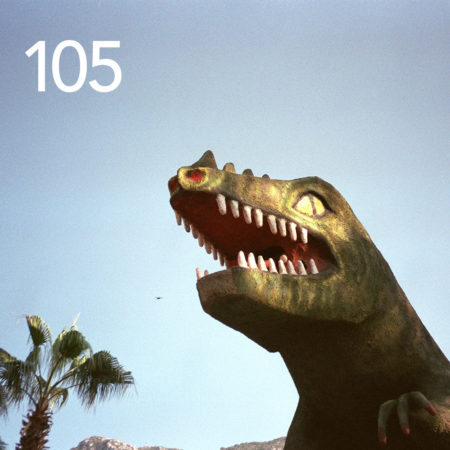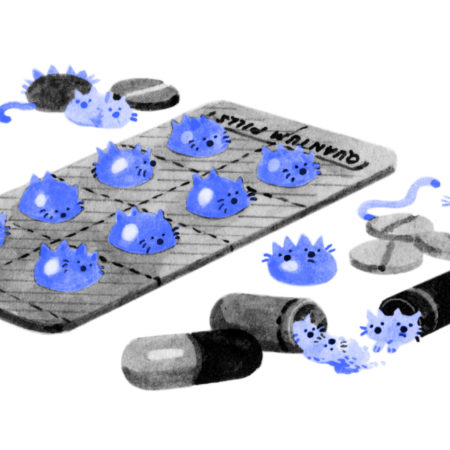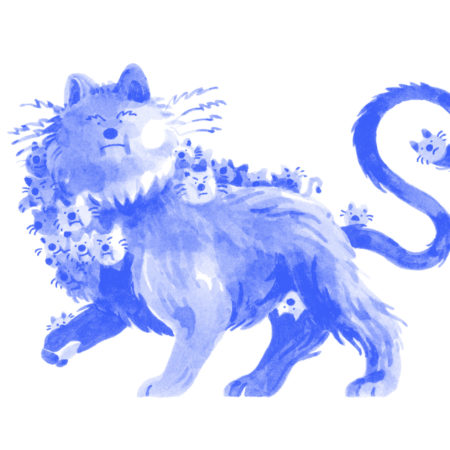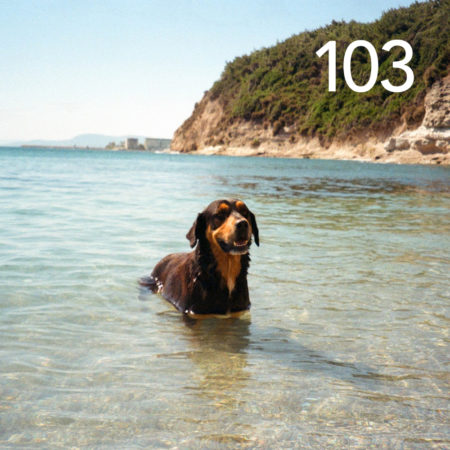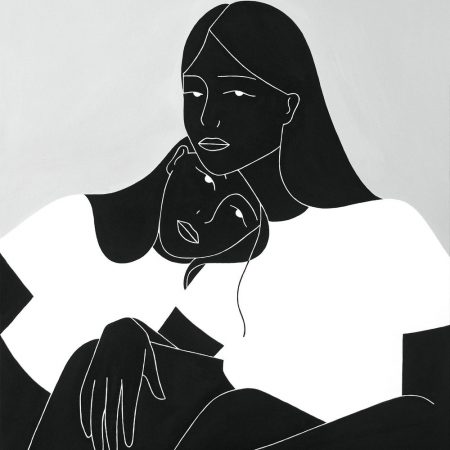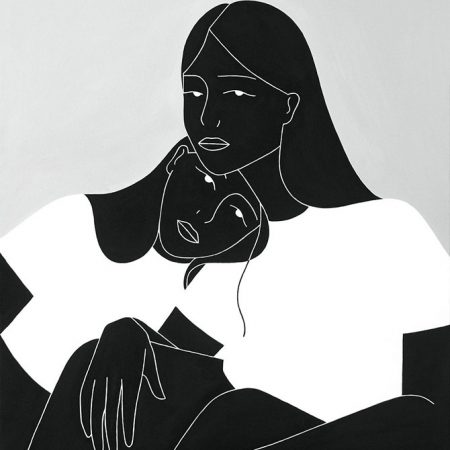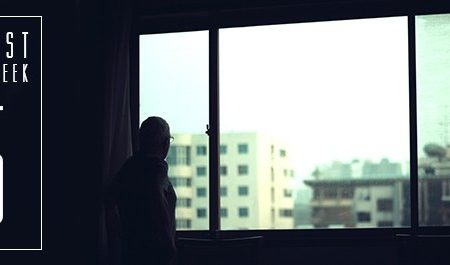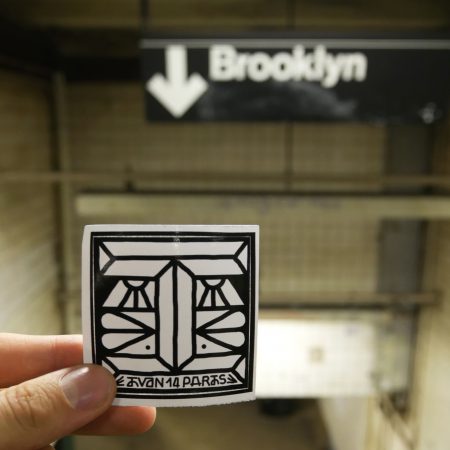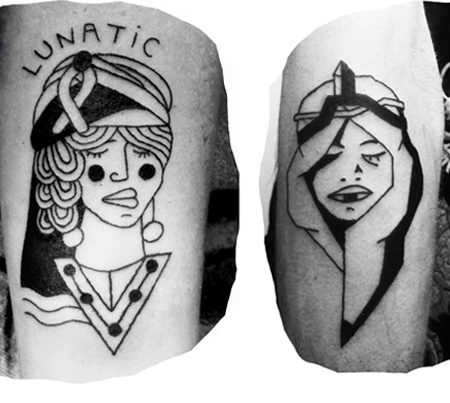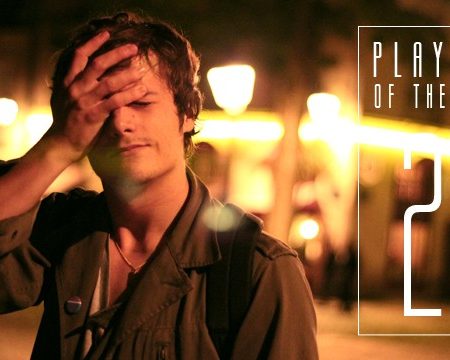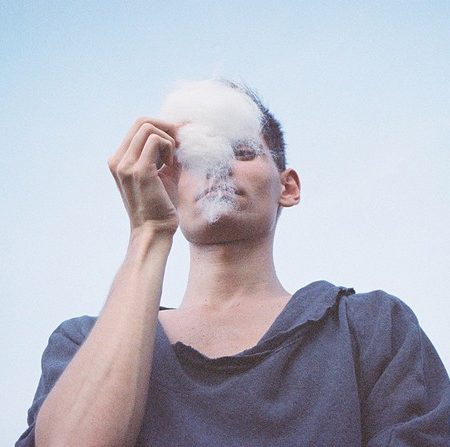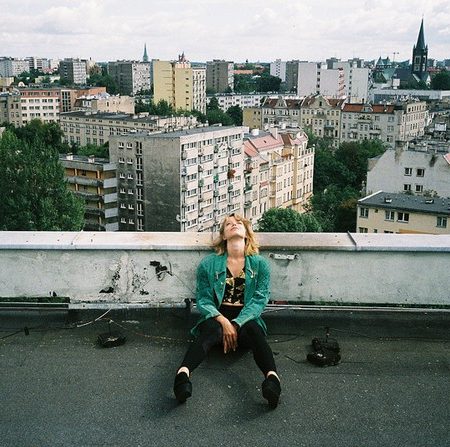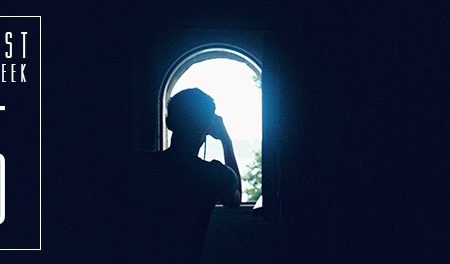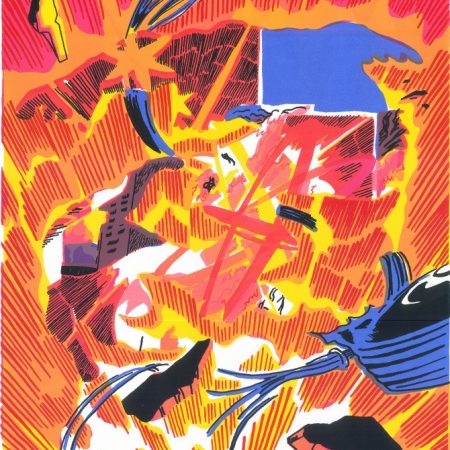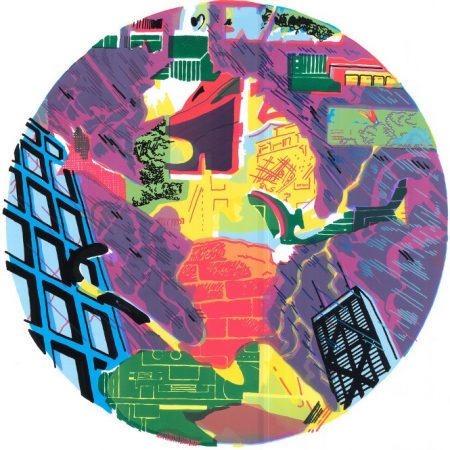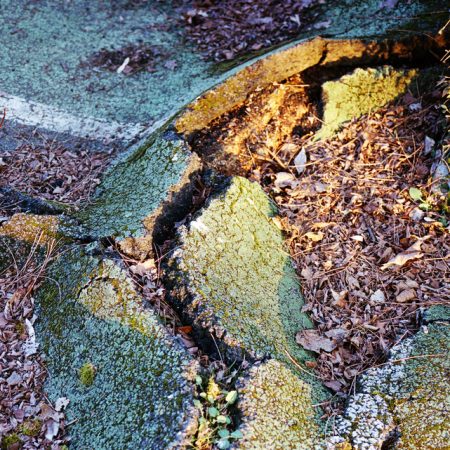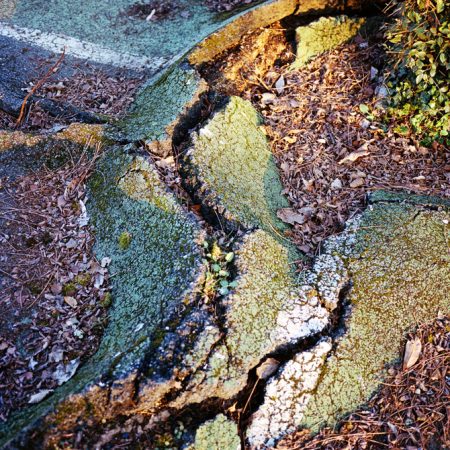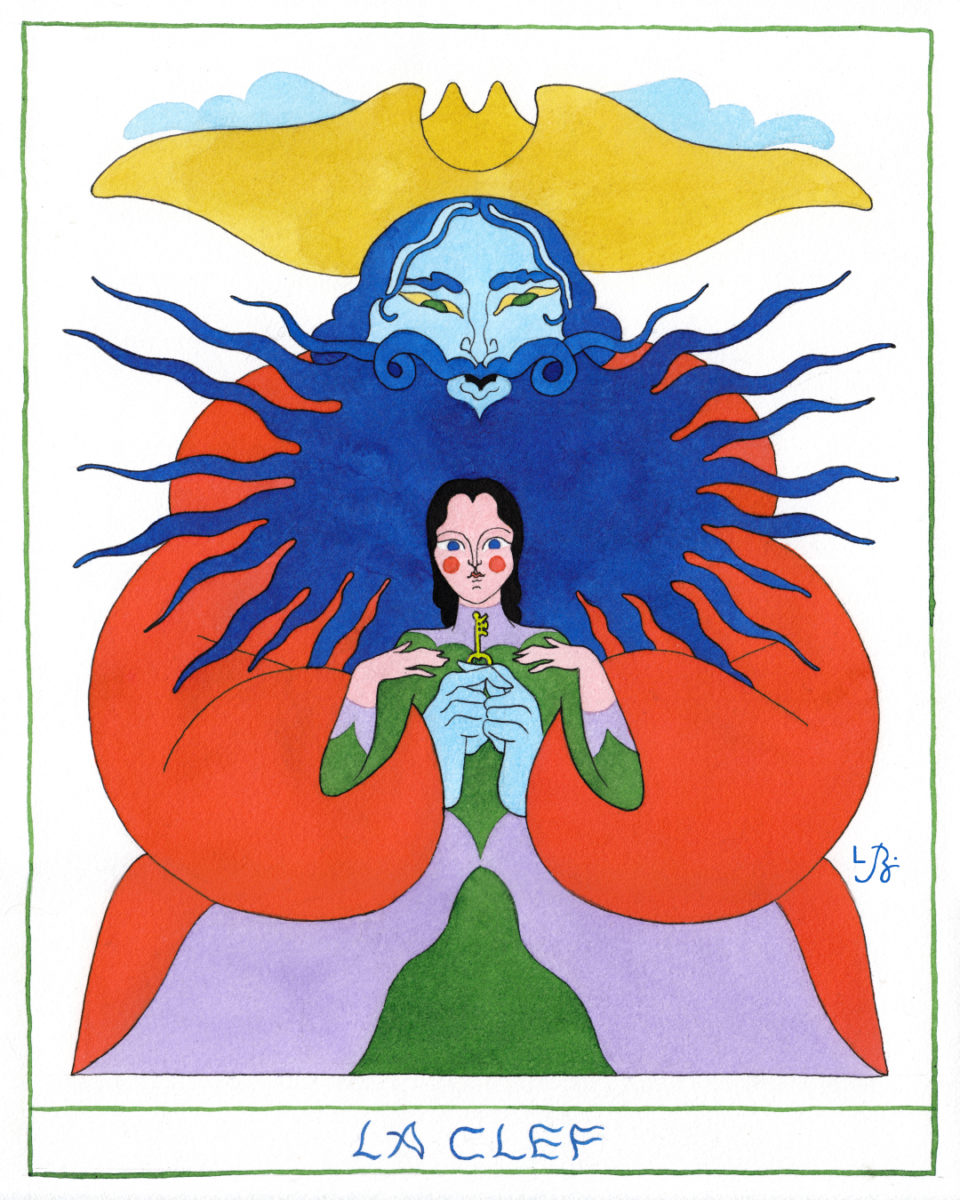
I can still remember nightmares I had when I was four
Lou Benesch
ART . February 11th, 2021Can we get a little intro about you?
I was born in France in 1989, my mother is French and my father is American. Although I’ve never properly lived in America, I’ve traveled there a lot and I was raised with a very strong sense of these two identities. I was raised in two worlds, one was filled with antiques, old portraits of ancestors, stories of castles in the French countryside and large family gatherings. In the other one, I was surrounded by an incredible collection of Native American art, a love for the outdoors, a thirst to understand how things work and how, when asking these questions, you can easily find yourself on a deep spiritual quest.
Today I live in Paris and split my time between freelance graphic design work, illustration jobs, various commissions and my personal artistic practice, which I hope one day will be the only thing I do!
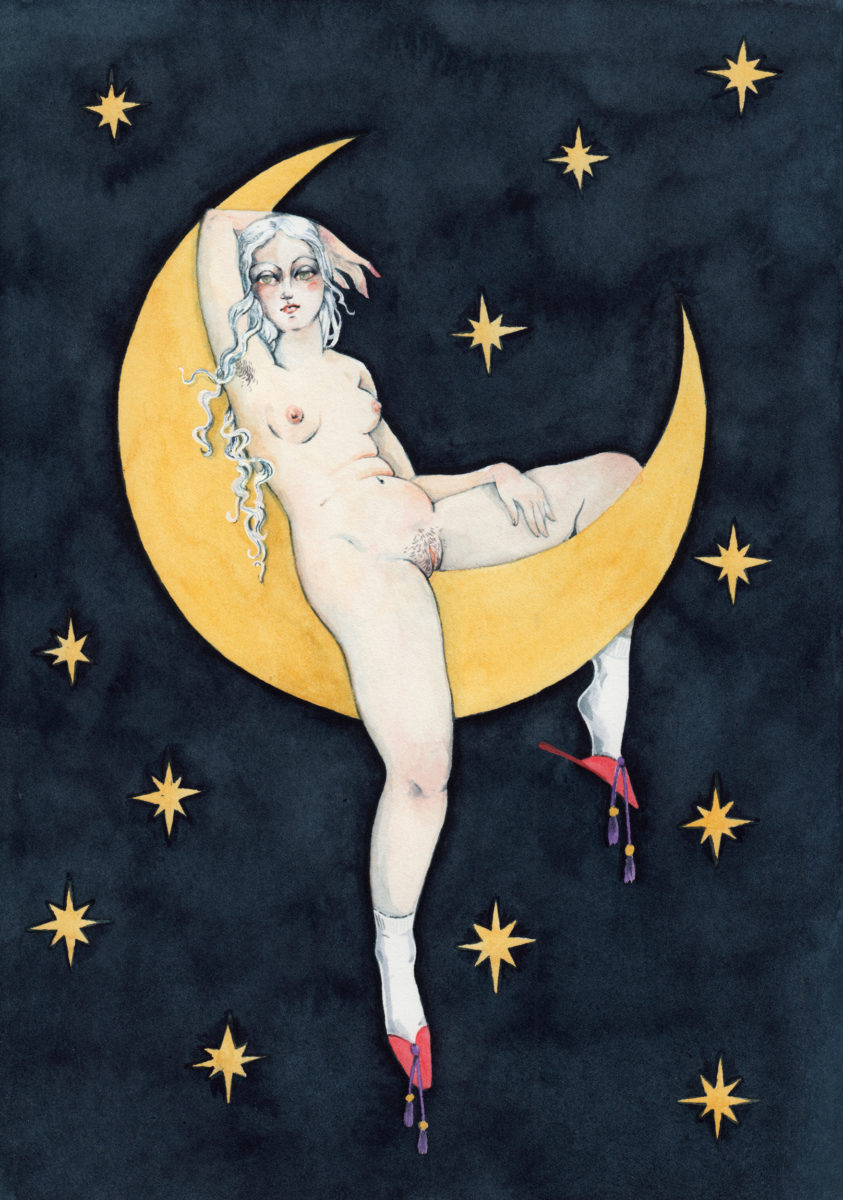
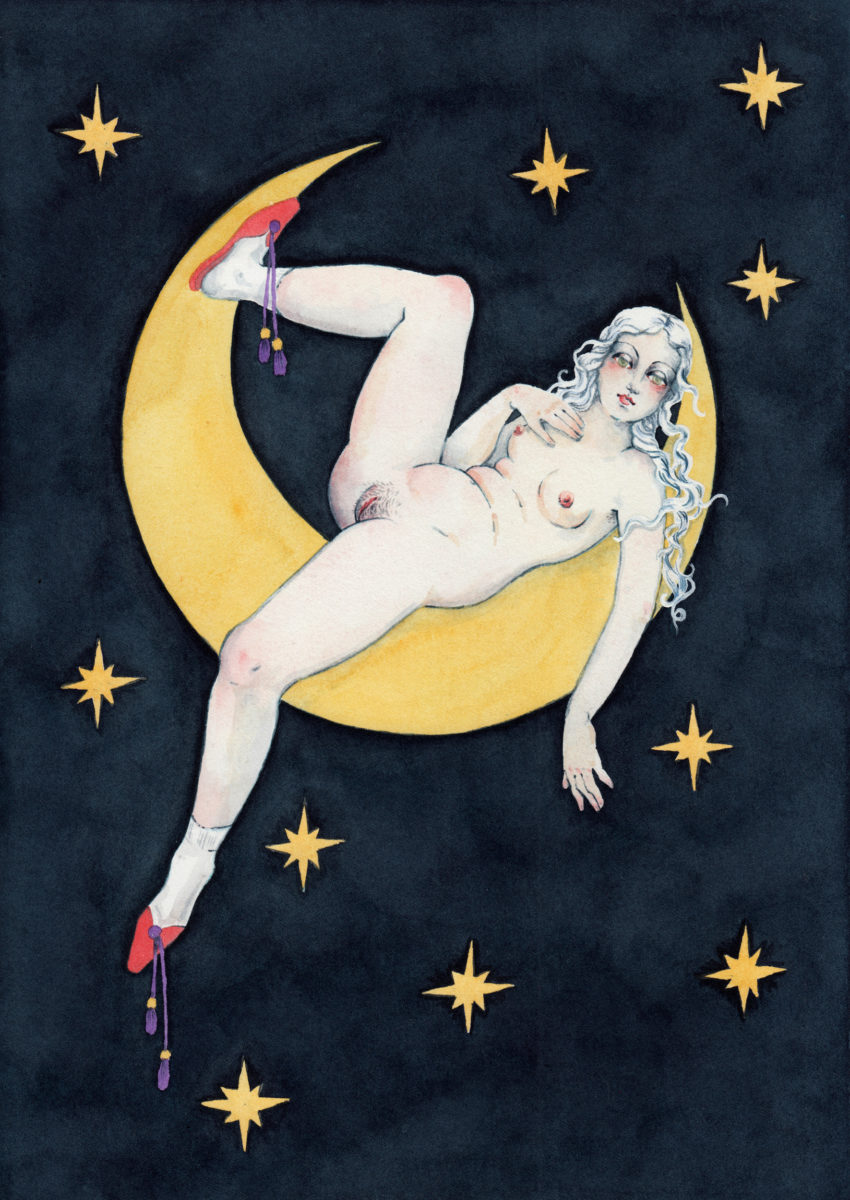
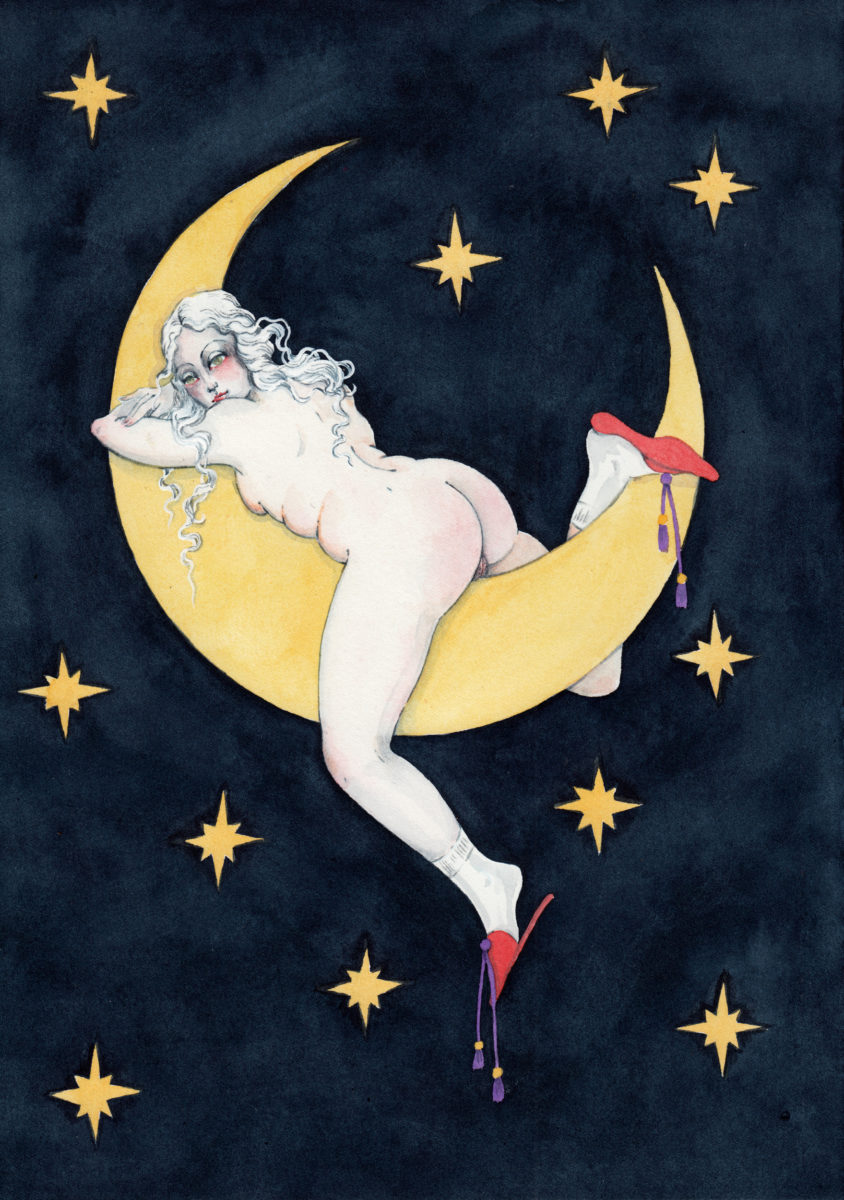
Which track would you recommend to listen to while reading this interview?
At this moment I would say Sand and Foam by Donovan, or Just Like Anything by Jackson C. Frank but in a couple hours I might say Gouge Away by the Pixies or Moving by Kate Bush so you get to choose…
Your work is quite mystical. Which magic-related story inspires you the most?
I think you can find magic in a lot of stories, even the ones that don’t call it “magic”, a story in itself can be magical in the way it affects you, in the way it makes words and images come to life in your head… But if I think of stories in which actual “magic” happens, I would say The Picture of Dorian Gray, though I can’t recall if Oscar Wilde actually mentions “magic”, there are definitely otherworldly things happening! In the realm of fairy tales I would choose Blue Beard and Alice in Wonderland, both these stories have fascinated me since I was a child.
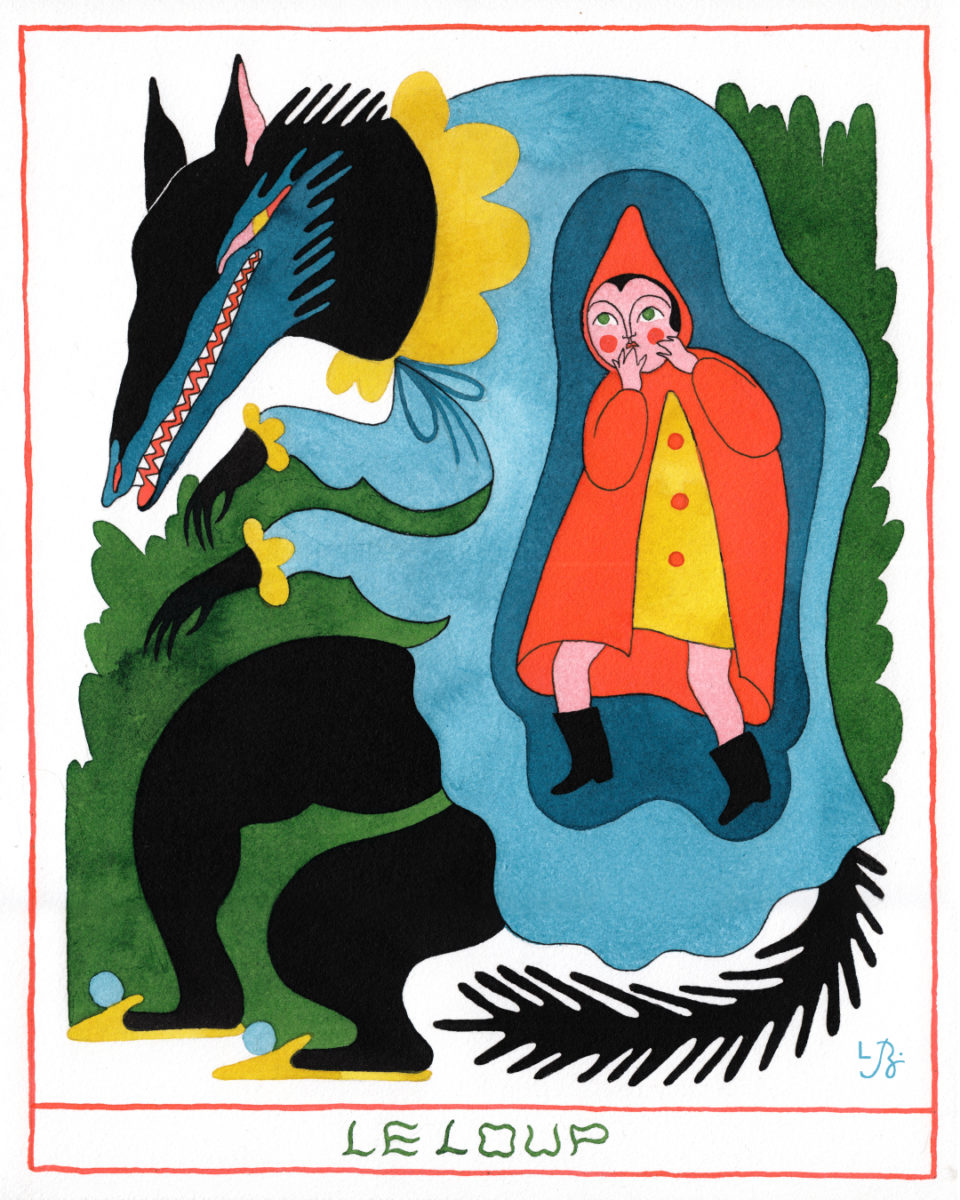
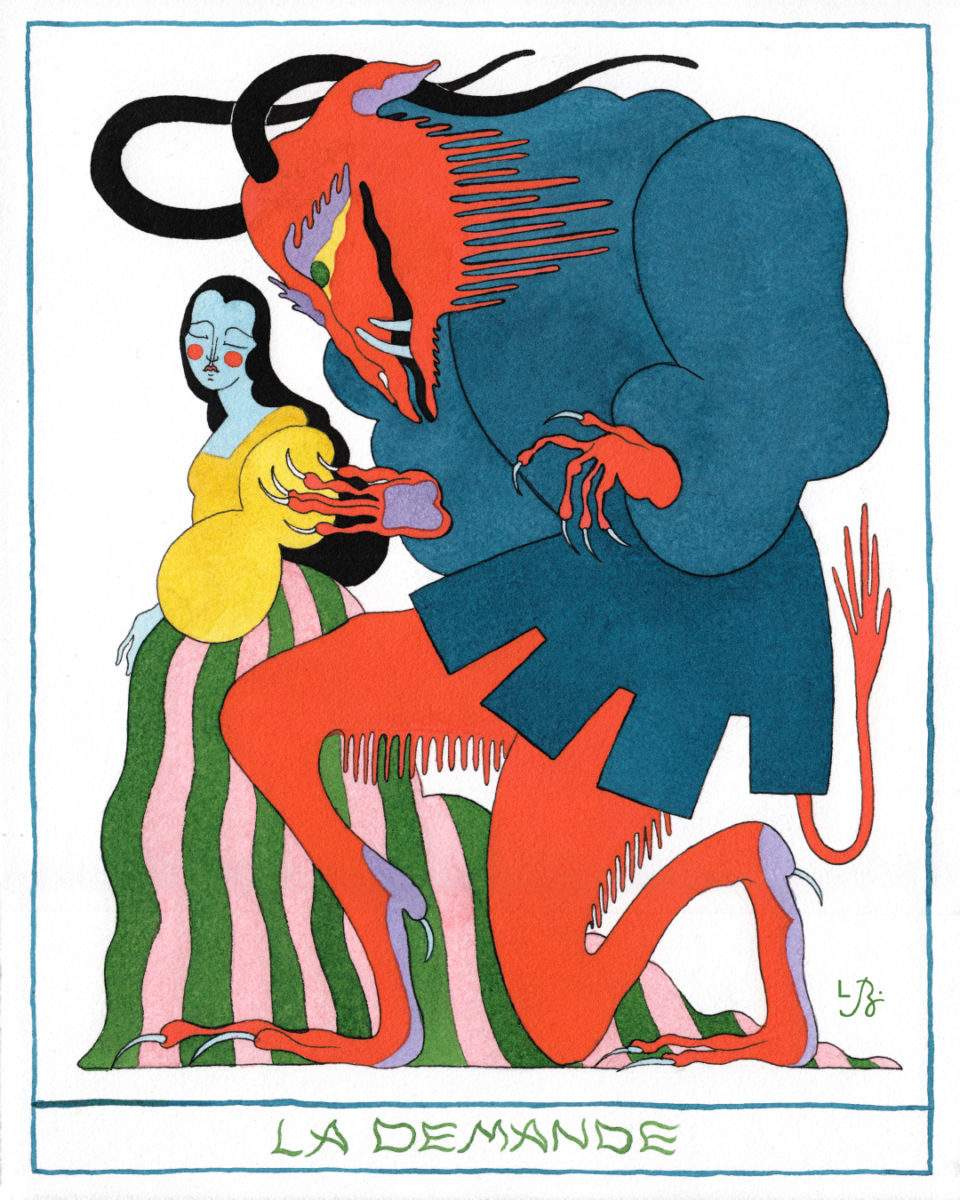
A lot of my work is inspired by tales of all kinds, Greek myths, fairy tales or novels… I also think personal memories and dreams can start to look and sound like these stories as time infuses magic into them. That’s probably why I’ve been calling “Contes” the personal practice I refer to – it’s a working title but it was the first one that came to me as I could see myself building from old myths, symbols, memories and creating my own tales.
What kind of witch would you be?
This particular question is one I’ve been asking myself for a long time, I don’t think I have one clear way of answering it. What I have found very important for myself is to keep figuring it out by studying and listening to my intuition. Whether it be novels, essays or fairy tales, a lot of my reading these past years has been, in some way, geared toward this search. I have a feeling I will never have a definitive answer, or maybe the definition of the witch I am will change as the definition of the woman I am also will.
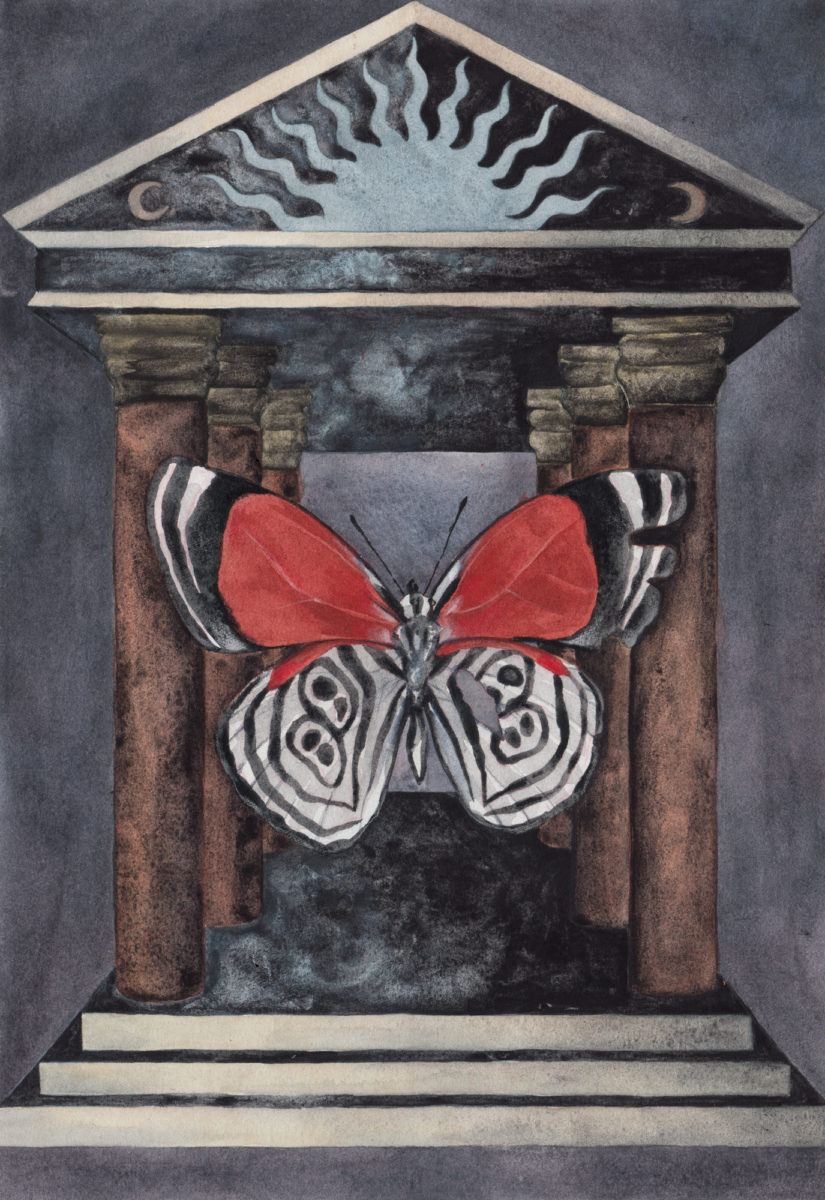
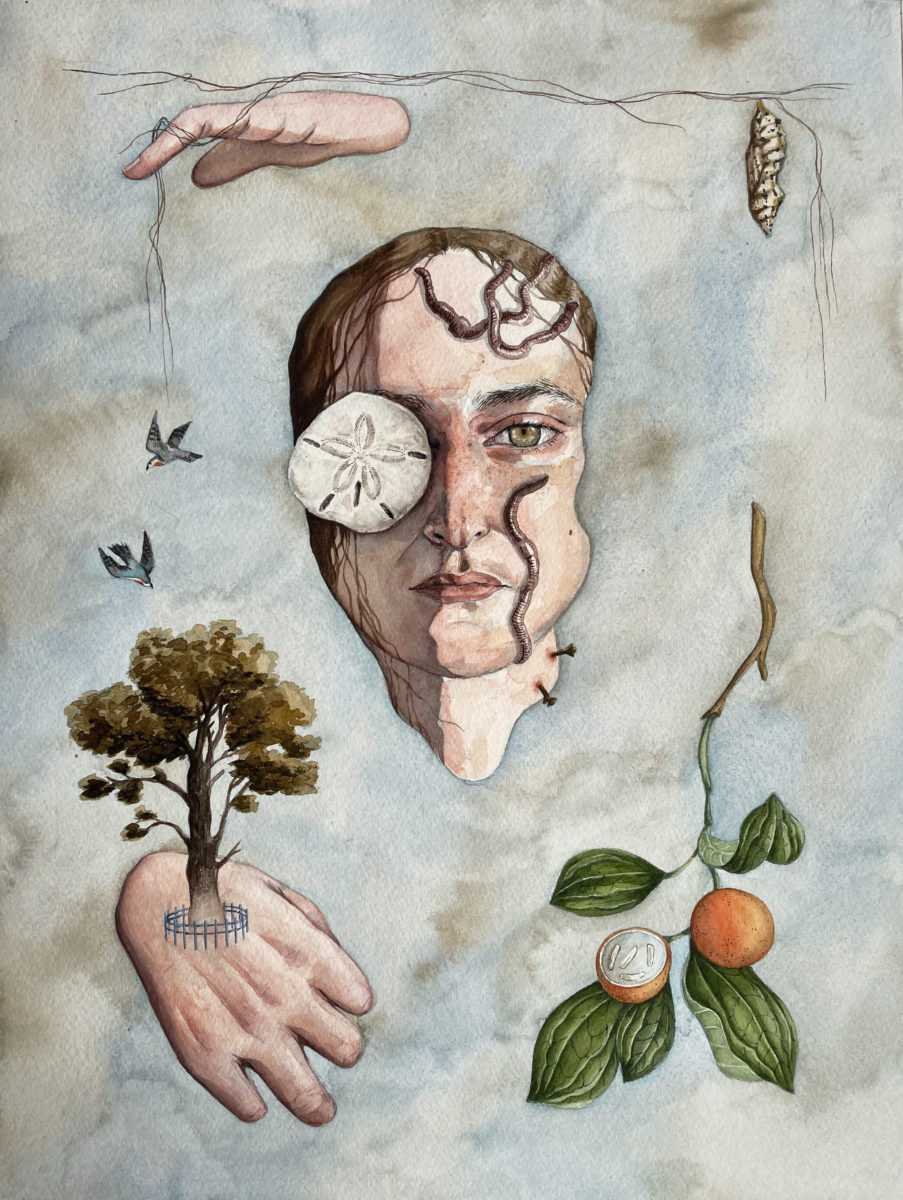
I think Andersen’s Thumbelina illustrates in a beautiful way what it is to go through the cycle of life as a woman. So today my answer could be that I aspire to one day be like the witch who helps the childless woman at the beginning of the story. There’s a strong sense of sorority in her act of providing the seed from which the little girl will later be born. I see this witch as a grounding presence to which people can turn to and find answers, comfort, and other magical acts they might need to be infused in their lives. She’s the older wiser woman who’s already been through what the mother is experiencing at her stage in life, and then comes Thumbelina, who still has a long way to go and things to learn before acquiring this knowledge. I feel I too still have so much to learn before becoming this version of woman, but the journey is interesting!
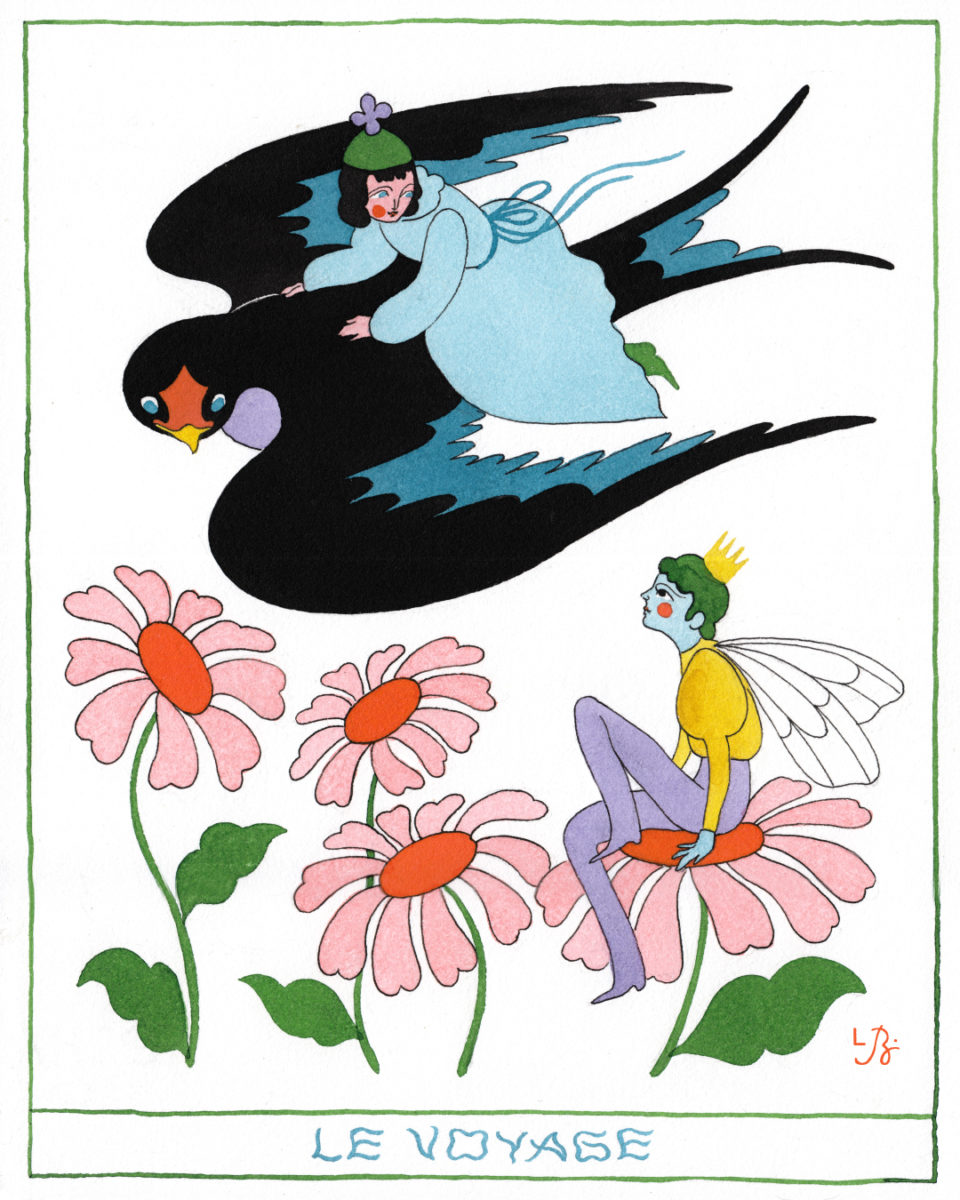
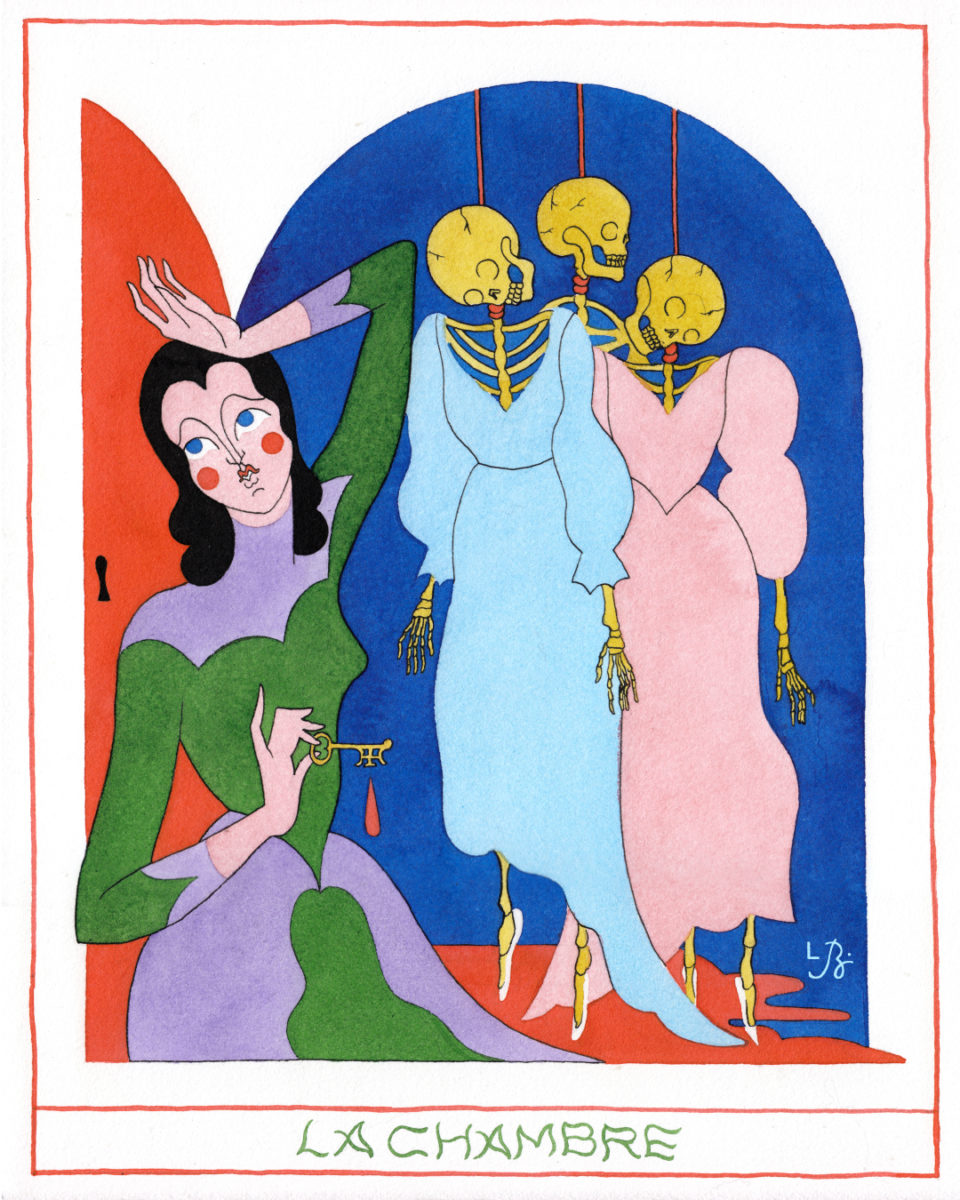
Where does that interest for tales and legends come from?
Probably from the need for things to be told in a different way for me to understand them, much like it happens with dreams. My imagination has always been very active, I can still remember nightmares I had when I was four, and all these images, stories I’ve been told and read have continued to fuel it. In a way it’s like taking a step back from reality, which I often find too blunt, that has helped me grasp at concepts like growing up, womanhood, love, sorrow etc. When I was little my godfather would invent stories on the spot that would become actual sagas which he would tell us before we went to bed over multiple days and I remember me and my friends being completely entranced by his words. There’s something magic in that feeling. We tend to stray away from it as we grow up and enter a more concrete world of responsibilities but I think it’s important to cultivate that place in your mind that grabs onto the story someone is telling you and is able to live it in an intense way. Because I think it’s that same place that helps you understand all the abstract things that surround us in life.
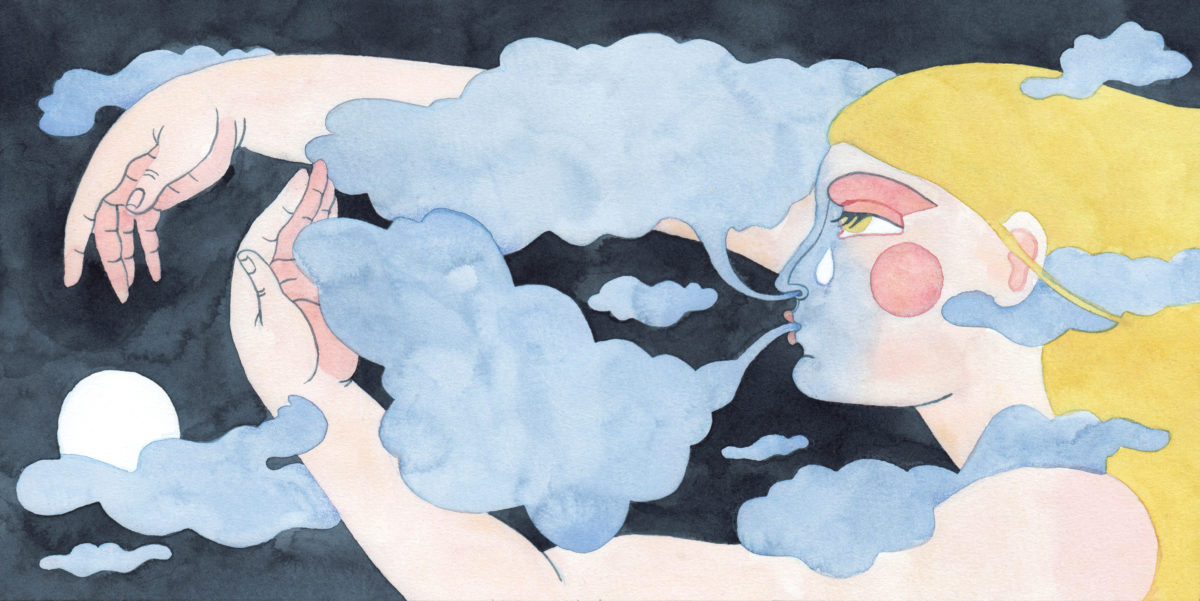
To which universe would you like to take people in through your work?
In my personal practice, I try as much as possible to paint a reflection of the images that come to me, almost as visions. In most cases these images are stuck to my mind until I can put them on paper, and while I am painting them I start to understand their meaning; it’s never happened the other way around, I’ve never started with a pure concept. What can happen is that while I am starting to draft the drawing, and at the same time starting to understand what lies beneath this image, I will then try to hone in on the idea and find new elements to emphasise it. It’s a world that is populated by strange beasts, naked landscapes, objects and symbols. I try to combine these elements to tell stories that are often very personal. The result for the people who discover these images is that it often speaks to them in a different way than it did for me. That’s the power of symbols, they have their universal meanings but there’s a second layer to them, which is the one every individual person has attached to them. Maybe I would like to take people to their own inner universe by going through mine? My illustration work is a dialled down version of this personal world. I still work in a very instinctive way but there are less layers to the understanding of the drawing and I try to find the best way to interpret the words that the image has to mirror, whether it be a description of a medieval beast or a fairy tale classic.
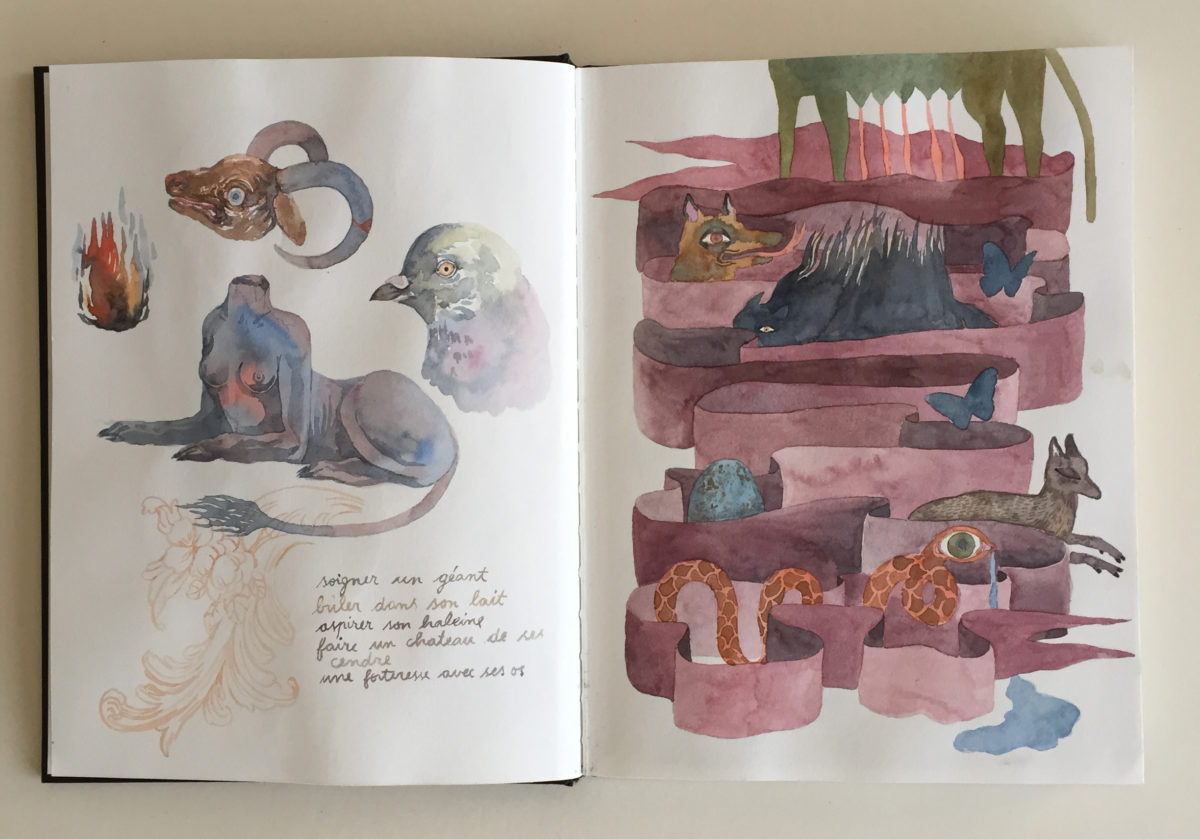
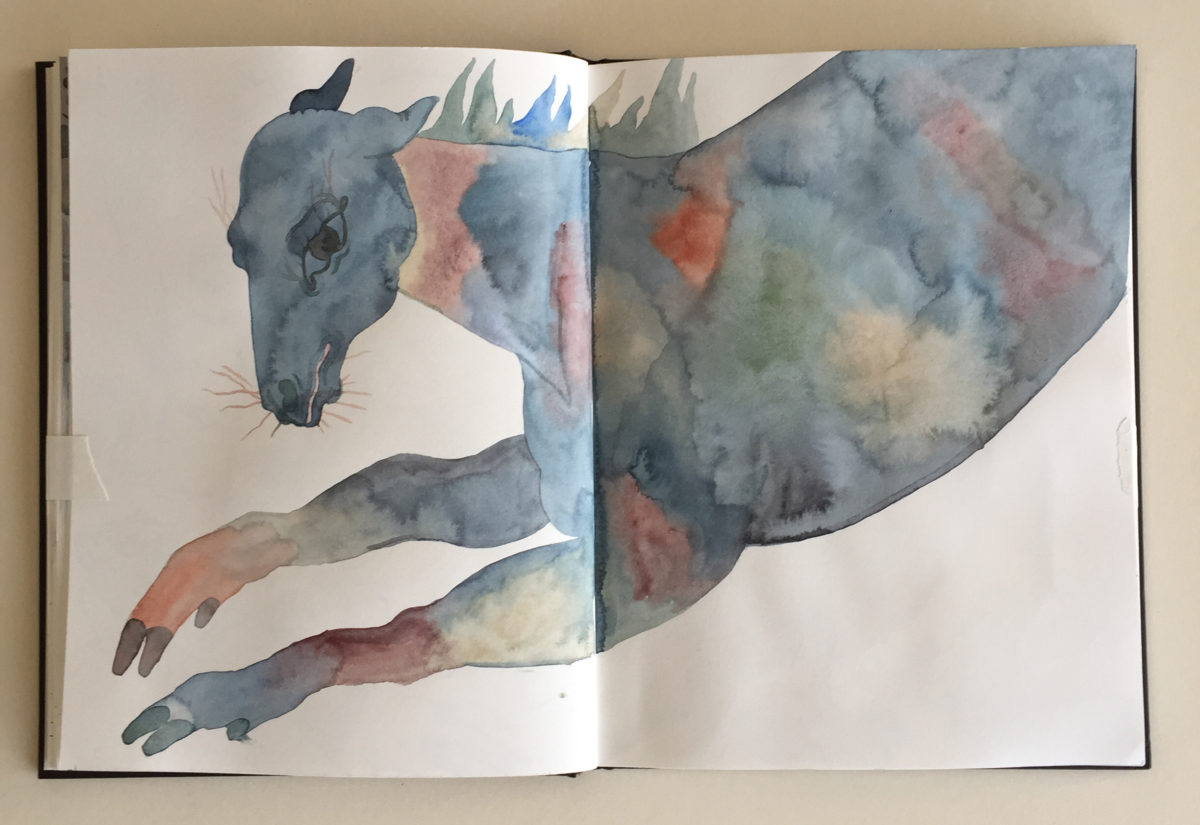
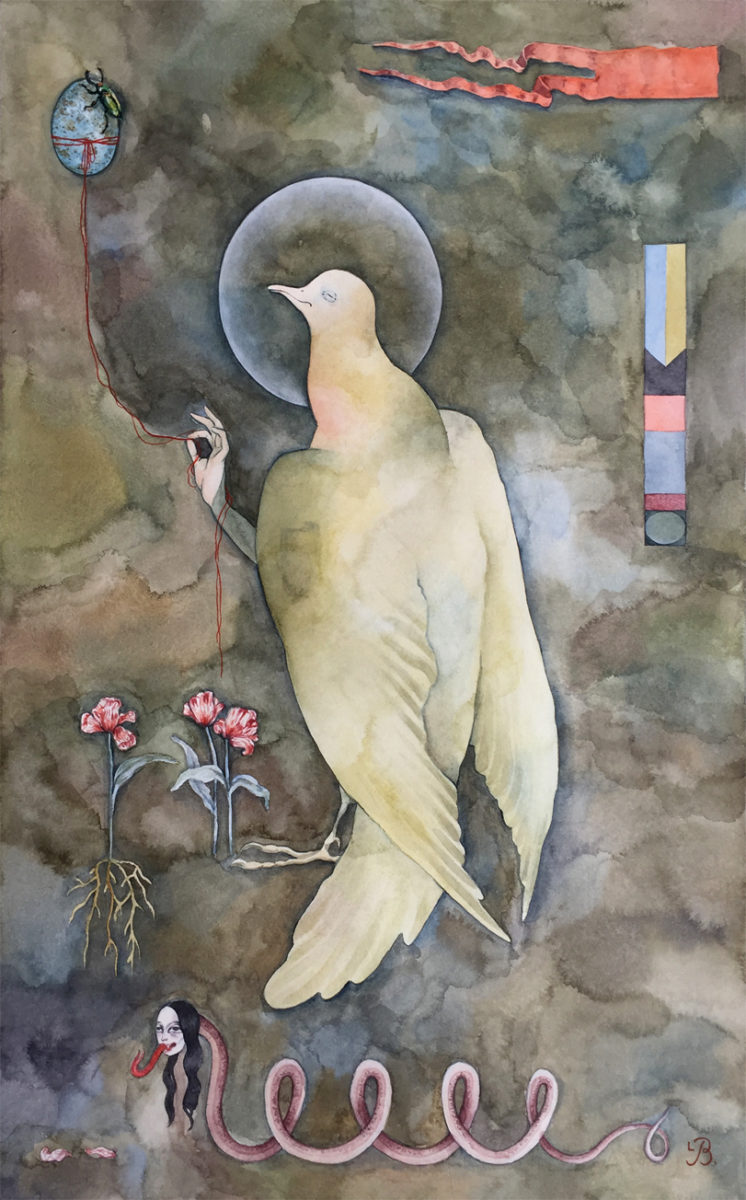
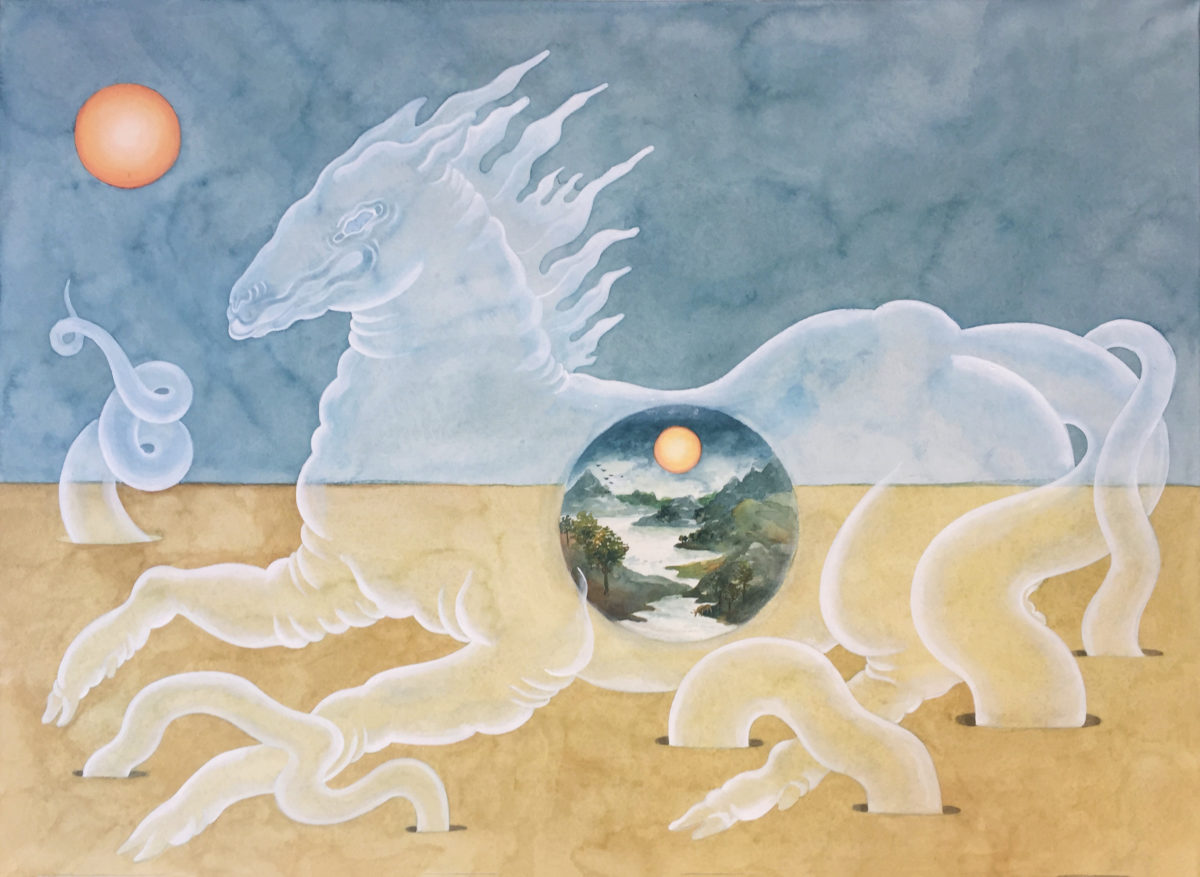
What was your favorite book as a child? Did it influence your style?
Apart from the collection of Doctor Seuss books my brother and I read over and over until the pages fell out – which definitely influenced my need for creating weird beasts and turning the world upside down to understand it – one of the books that has stuck to me throughout the years is The Phantom Tollbooth by Norton Juster. It’s very similar to Alice in Wonderland in the way that a child, in this case a little boy named Milo, is being invited into another world where he will meet a multitude of different characters who serve as mirrors for different concepts in life. Style-wise, it was also movies like Le Roi et l’Oiseau, Yellow Submarine and La Planète Sauvage that influenced me a lot.
Which ones of your beasts series would you take as a pet?
Probably the Black Shuck, I feel it would be pretty cool to walk around with a hellhound by my side.
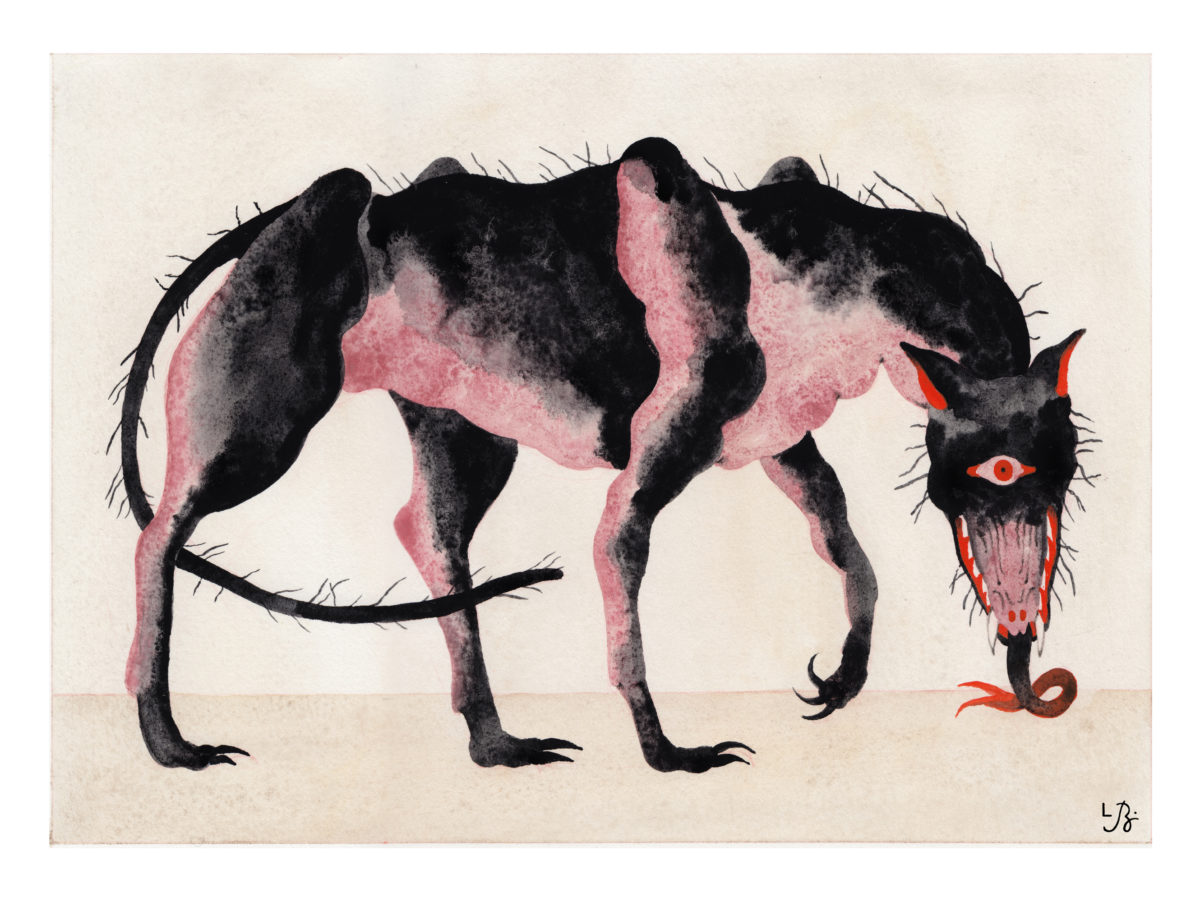
Could you guide us through your process for the artwork below?
I’ve always had a passion for bestiaries of all kinds, the first ones that come to mind are the ones that were made in the Middle Ages, but there are so many other forms they can take, for example Pokemon is an incredible bestiary! There’s something beautiful in the act of collecting and recording all these creatures.
Through the years I’ve explored the theme of the bestiary several times, mostly in creating my own cast of monsters. This time, my work was rooted in research: I was guided by folk tales, medieval manuscripts, the writings of Pliny the Elder and many other written recollections of these mythical animals. By the end of the research part of my work I had almost 100 descriptions of creatures from allover the world, and that’s a very small fraction of what you can find, so the process of choosing only 30 was pretty hard! I had decided to share this series daily on my Instagram for a month so I wanted for people to discover new creatures, that I also had never heard of before this project started.
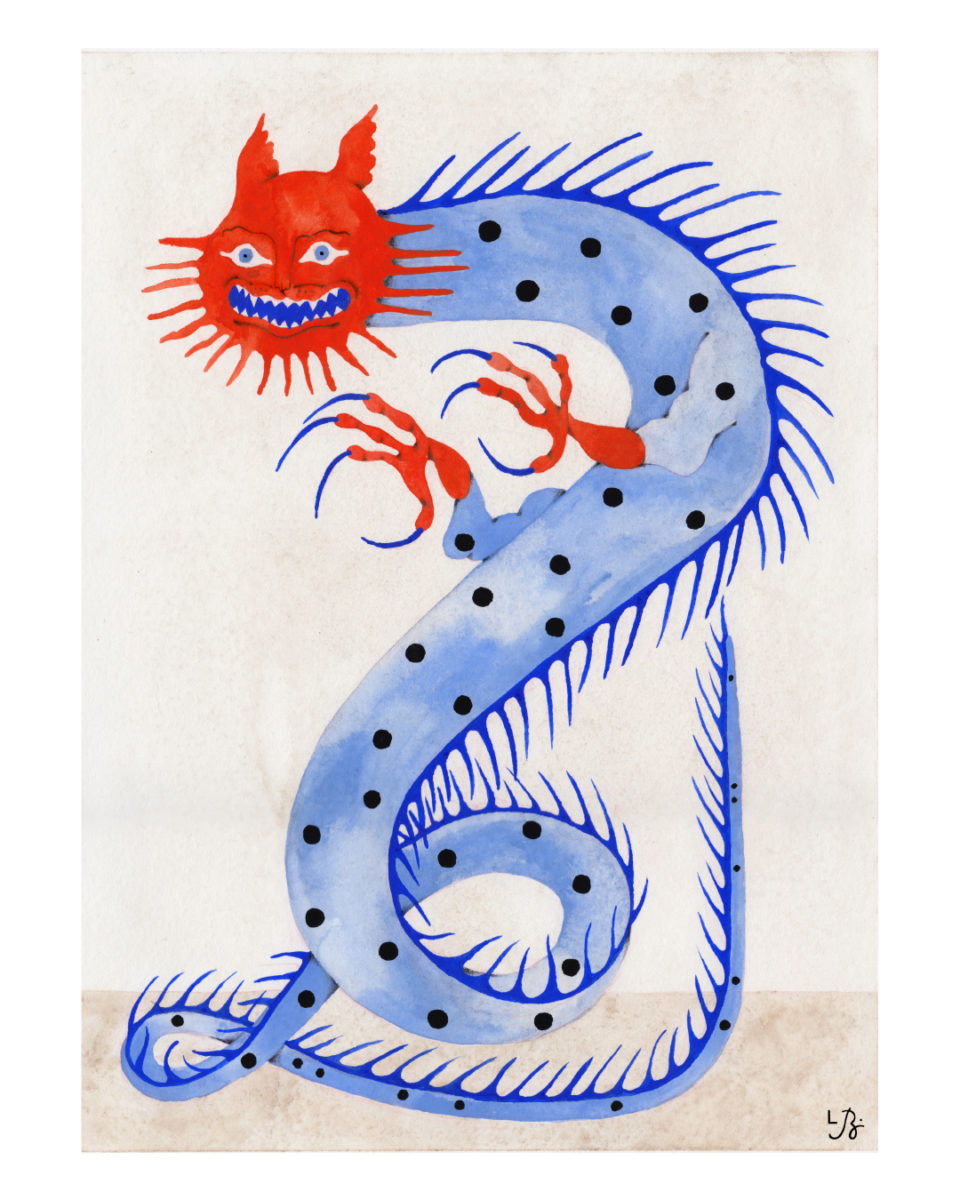
The medium I chose for this series was gouache. The way I used it permitted me to retain the somewhat “naive” quality you can find in medieval illustrations. The idea was in no way to make them look realistic, but on the contrary, to exacerbate their fantastic, surreal and sometimes humorous qualities. I also chose creatures from the four corners of the earth. Some are from Japan, others Australia, Sweden, Egypt, France… And in painting them all in the same fashion, I wanted to emphasise the fact that they all belonged to the same world: the world created by human’s imagination, fear, desire and faith.
It could be a project of a life time, and I definitely want to come back to it, so maybe there will be a second “Month of Beasts” in 2021…
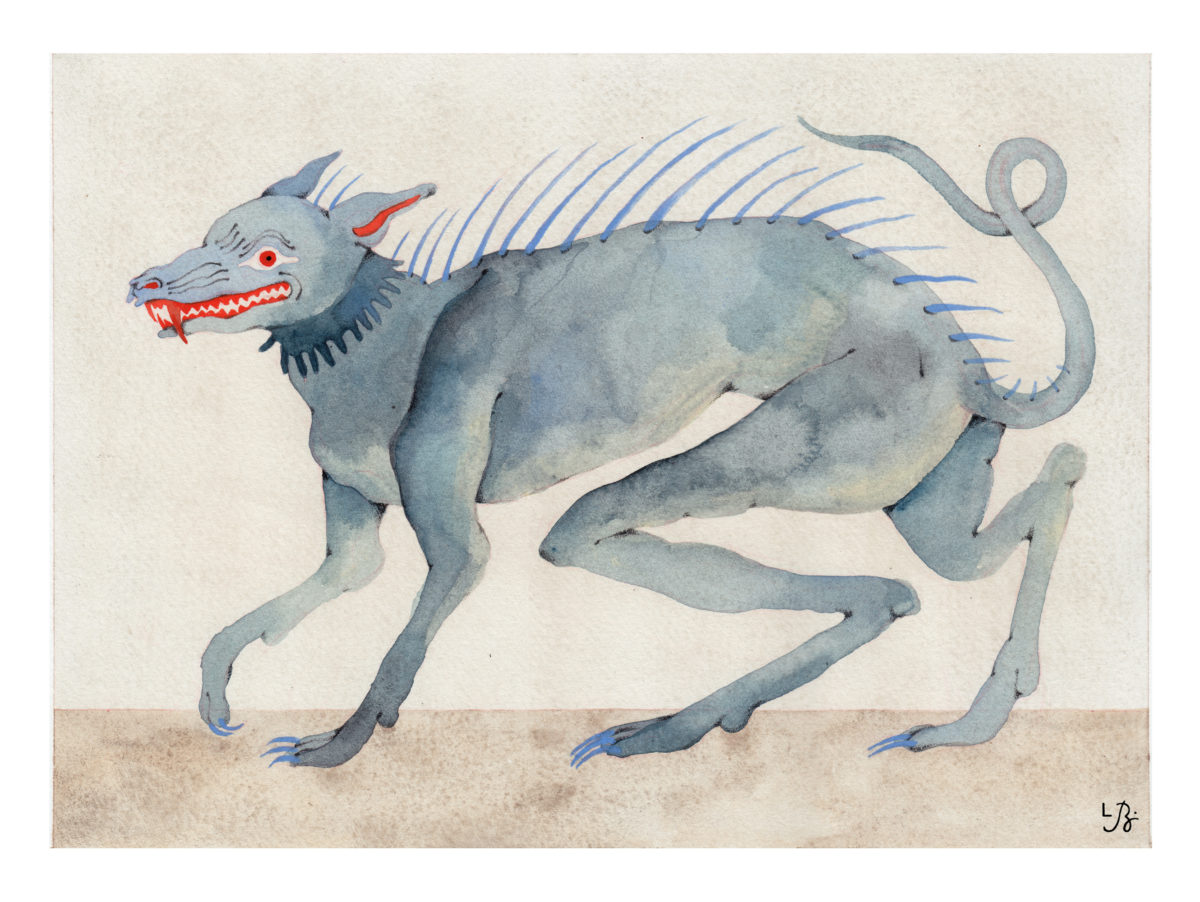
Any other series coming?
At the moment I’m focusing on the larger scale and more detailed Contes paintings. I feel the need to go deeper into what this series has to offer, it’s like taking a trip through my own psyche and gathering images.
The image of the knight, defender of a certain object, value, faith, has also been something I would like to explore in a series. And as I was saying earlier, I would love to come back to the bestiary, and maybe even make a book out of this project… We’ll see what 2021 has to offer, and like many artists, I have a very long list of subjects I can’t wait to dive into!
Could you share with us some artists that inspire you?
I feel very connected to Leonora Carrington’s work, both her paintings and writings speak to me on a very personal level. She and artists like Frida Kahlo and Kiki Smith are the ones who taught me to look at and inside myself for inspiration. I also love to spend time inside Hieronymus Bosch’s paintings and discover all his creatures, wondering how a human mind can produce such an intricate and spiritual body of work. Instagram has also been a great ressource for me to discover incredible artists: Alessandro Sicioldr’s work amazes me in the way he is able to build fantastic worlds and create characters that look like they’re ancient gods roaming these plains. I’ve started collecting some of these artist’s work and hope that one day I will have more walls to hang everything… Recently I have acquired two paintings by Magali Cazo and her ink work is even more beautiful in real life, there is something very pure in the way she interacts with her medium. These are a few but I am glad to have many artists I can call upon in a spiritual way for inspiration!
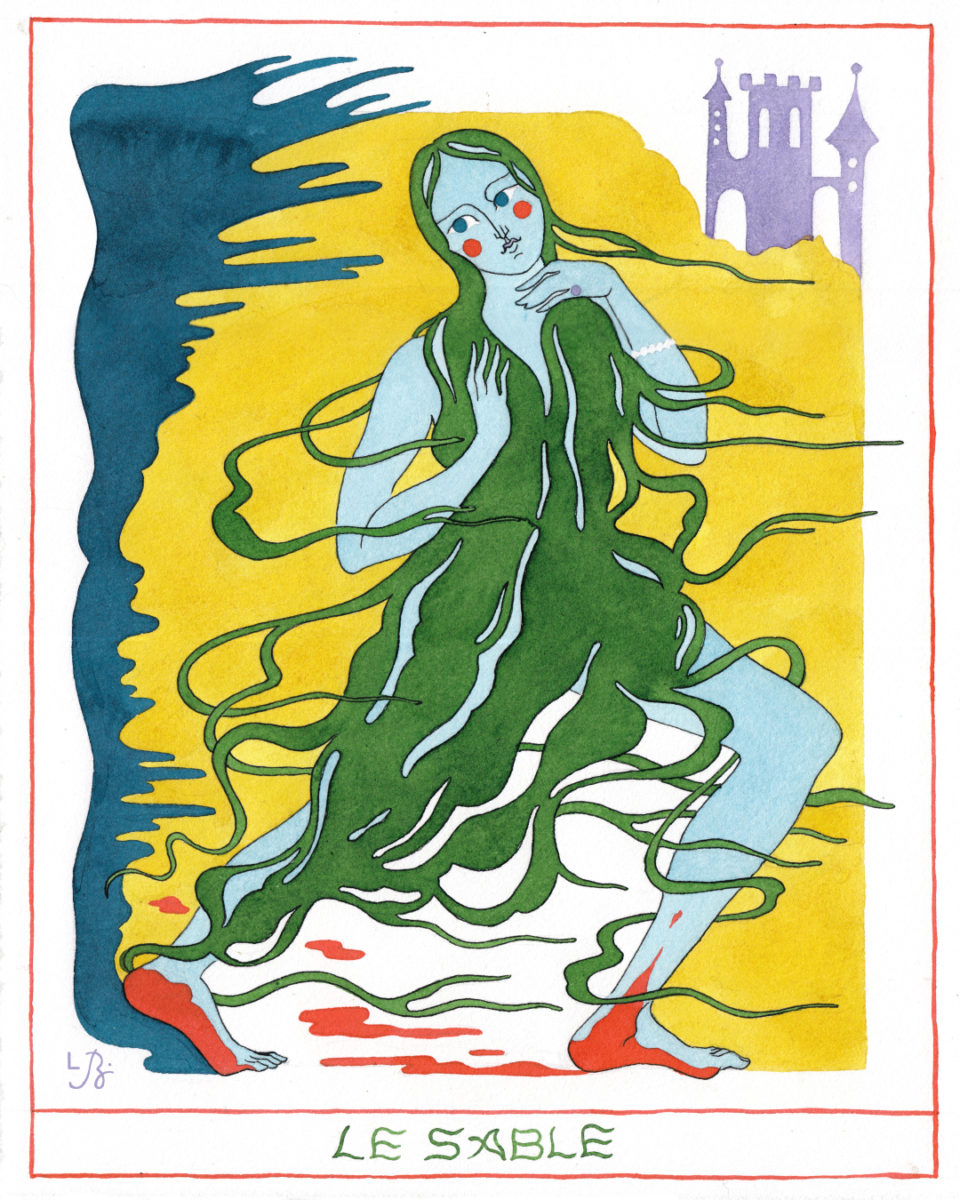
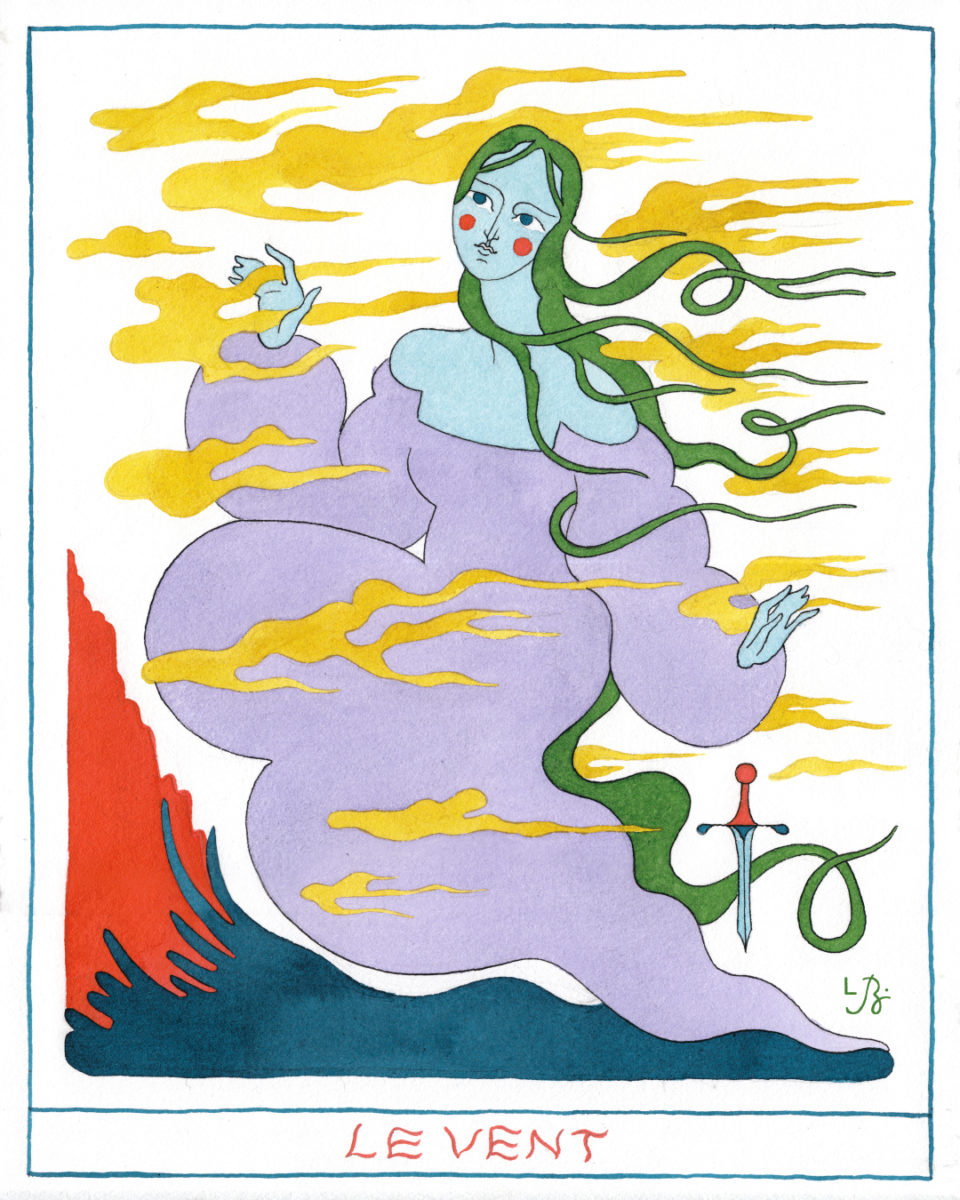
What would be your dream project?
My dream project would be to have an entire house to use as my canvas. There’s something I find fascinating in the image of the home, the nest, the den, and how we each relate to it in a different way. I spend most of my time at home and I have a very strong bond with my personal space: it’s where I grow, where I dream, where I work, where I collect thoughts and objects. Letting someone in is like welcoming them into a certain part of my mind and I would love to push that idea further; by painting the walls, seeing beasts appear on the side of doorways, letting a world, that was once contained on paper and in my head, run freely on the ceilings… I can also imagine some of these creatures wanting to take actual form and becoming sculptures…
There are beautiful examples of artists’ minds investing spaces, like Jean Cocteau’s Villa Santo Sospir, Salvador Dalí’s house in Port Lligat, Leonora Carrington and Max Ernst’s house in Saint Martin d’Ardèche… The former also painted doors and walls in Paul Eluard’s house when he was his guest in 1923. Eluard left and these forgotten paintings were uncovered years later, some had been destroyed, some covered in wall paper by the owners who followed. I love the archaeological aspect these projects can take with time.
During the recent lockdowns, Nathalie L’Été has been sharing her process of painting her creations allover her house; she’s a beautiful example of what a mind can do when it’s offered an entire home.
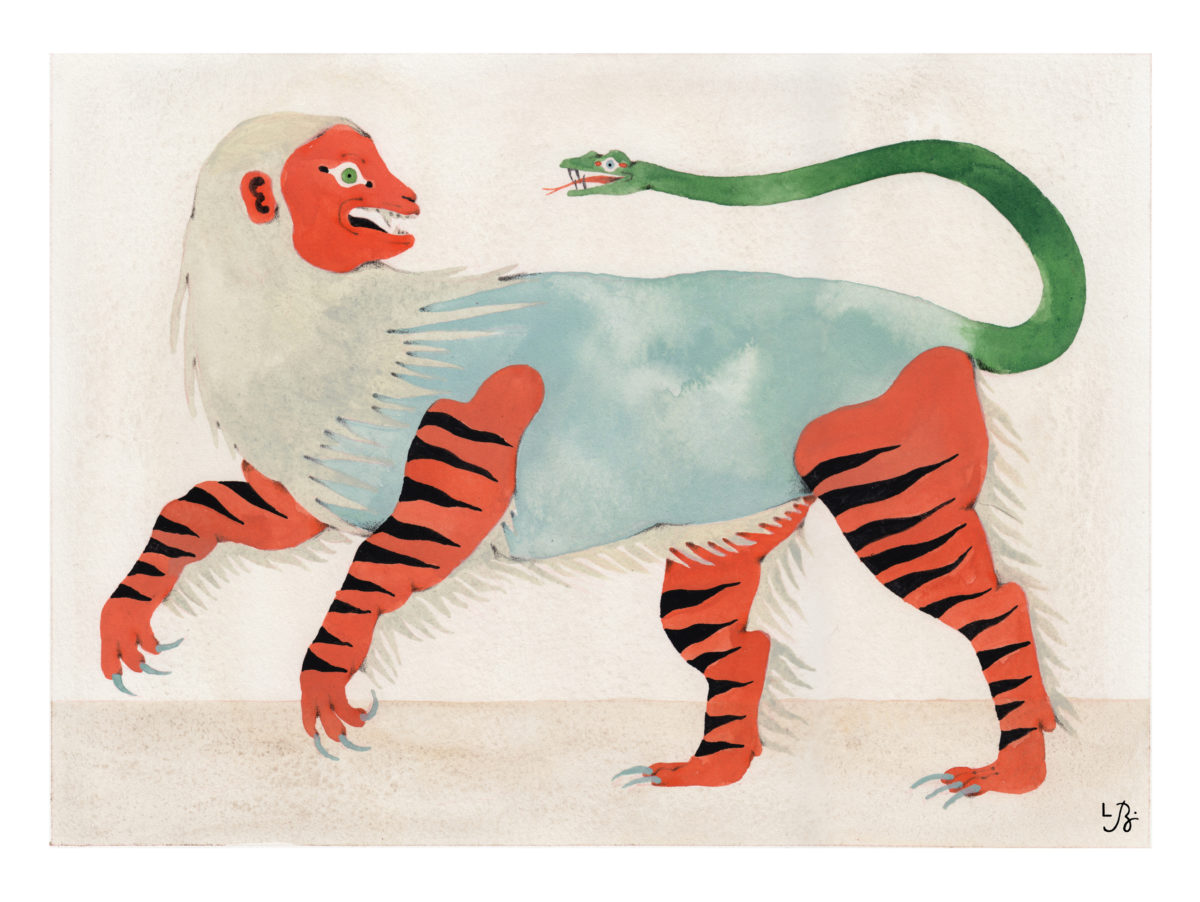
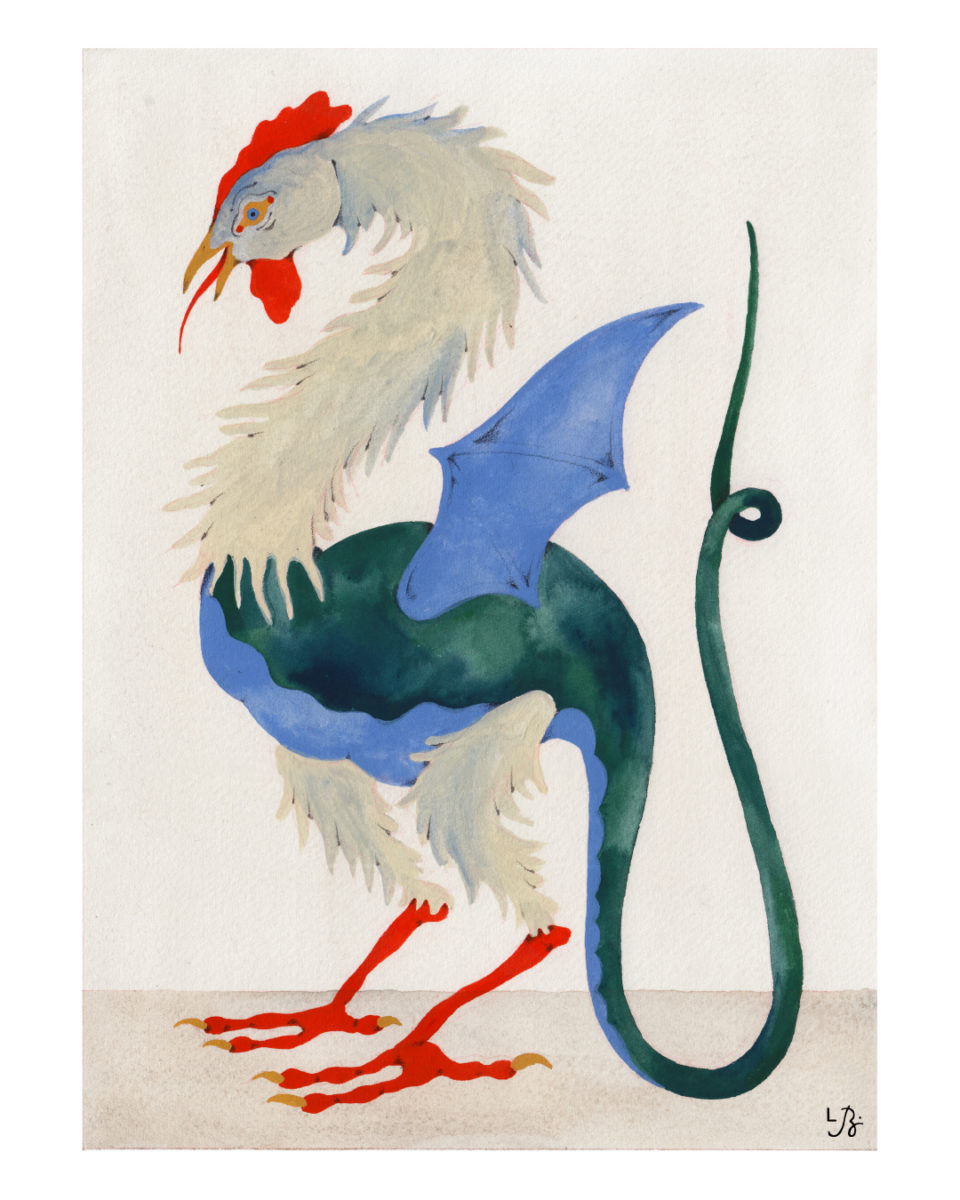
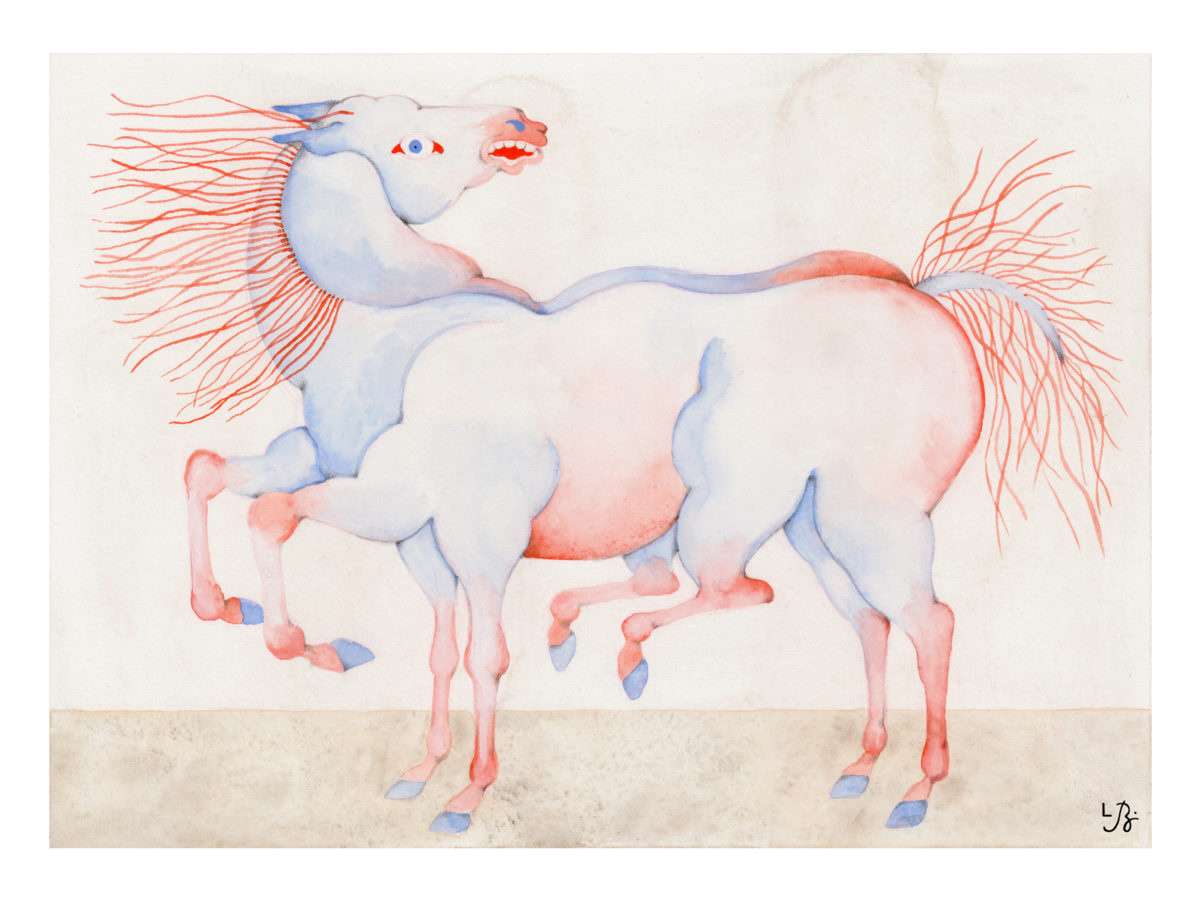
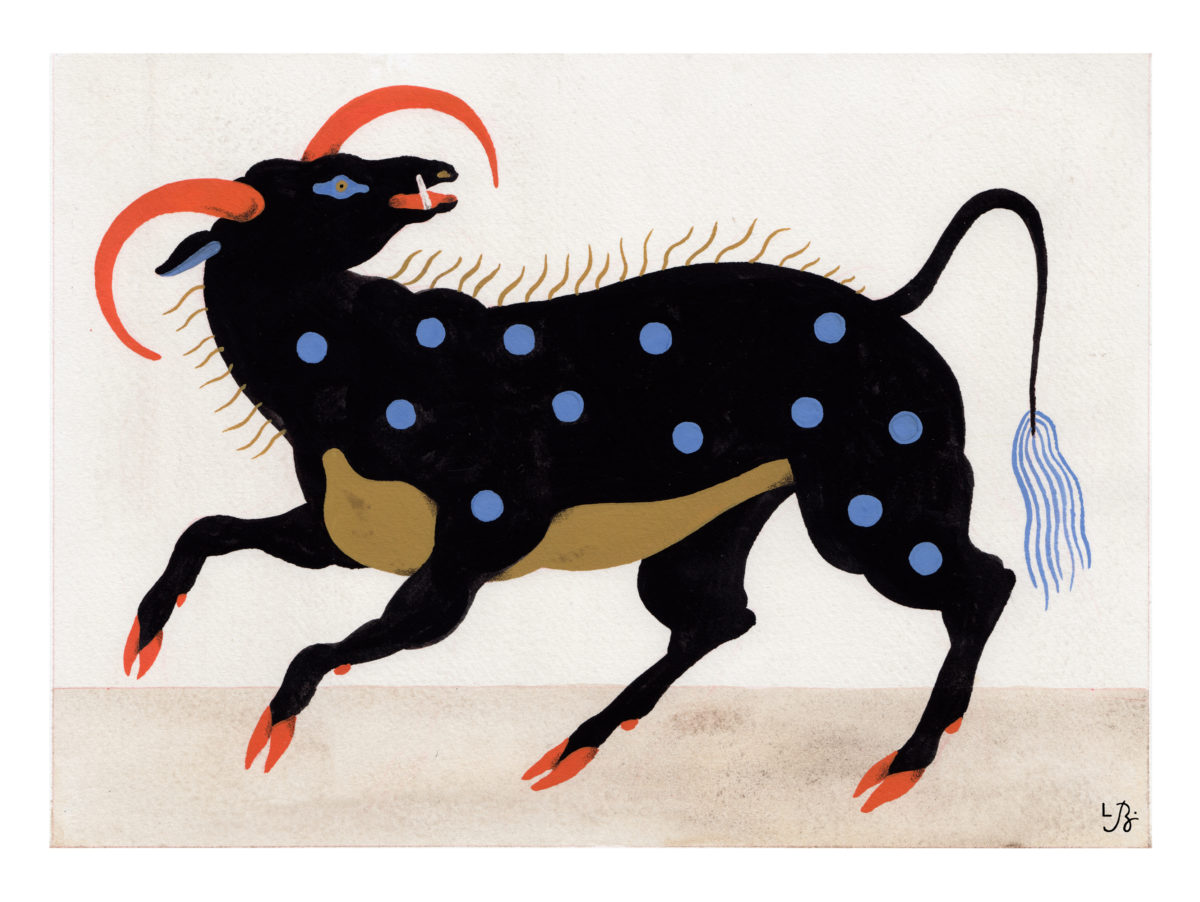
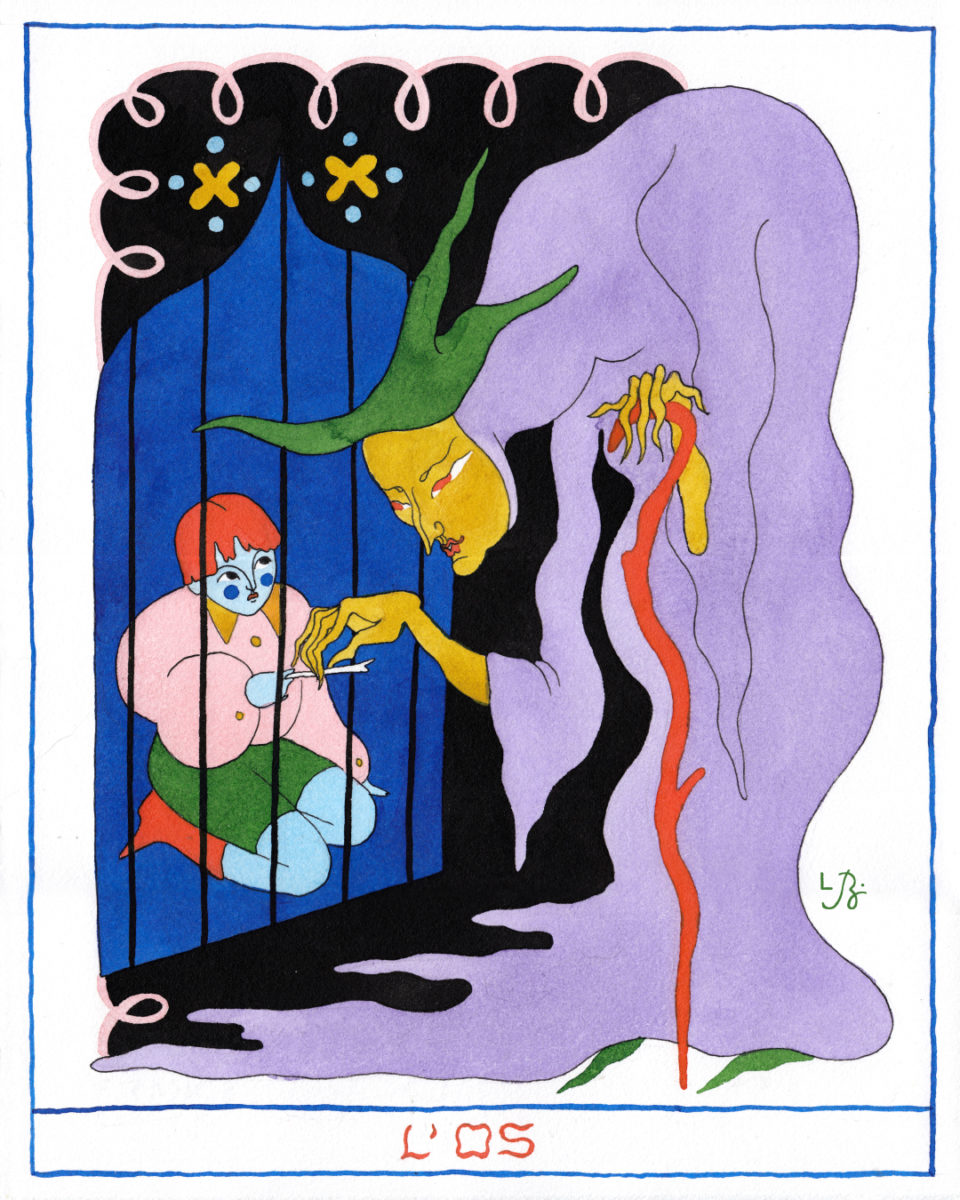
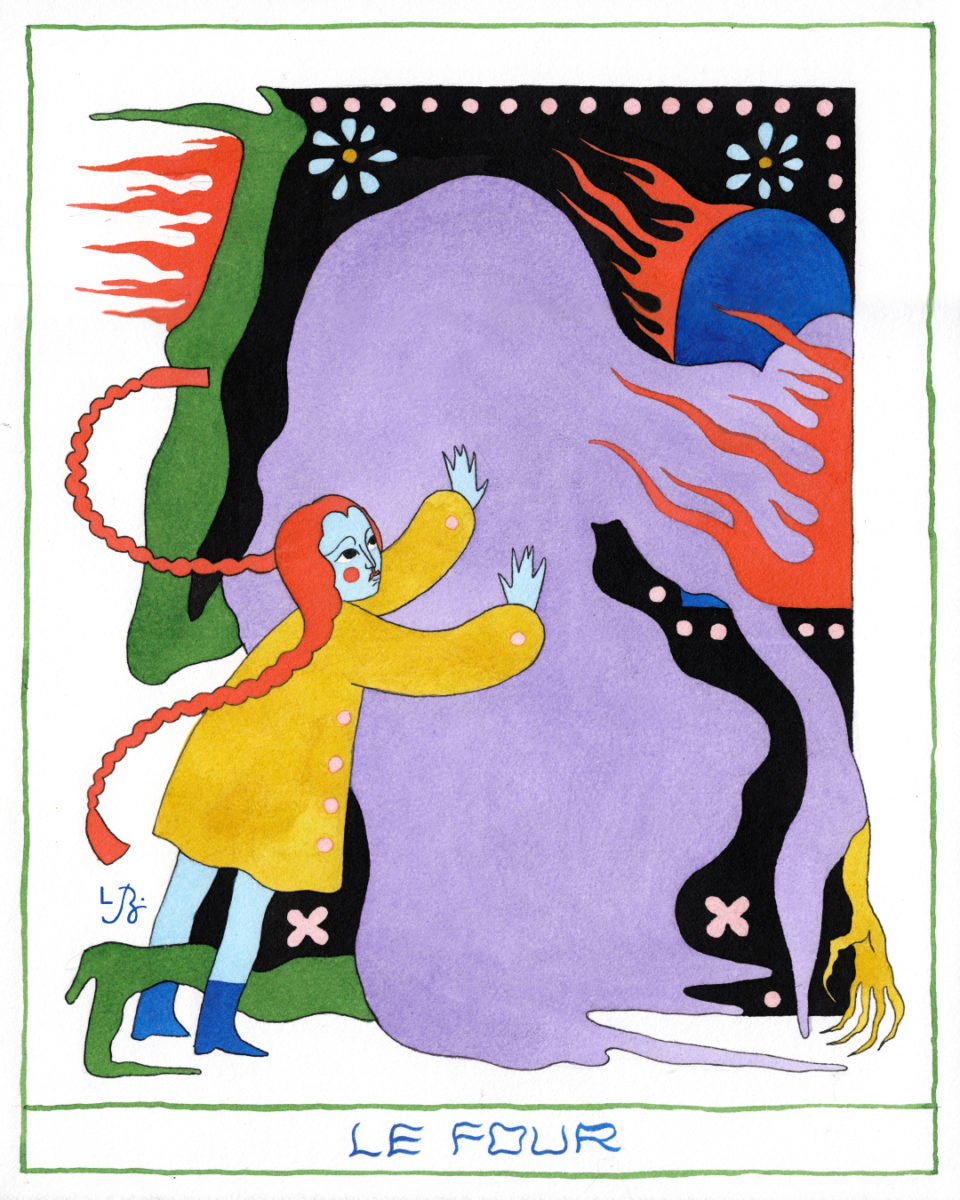
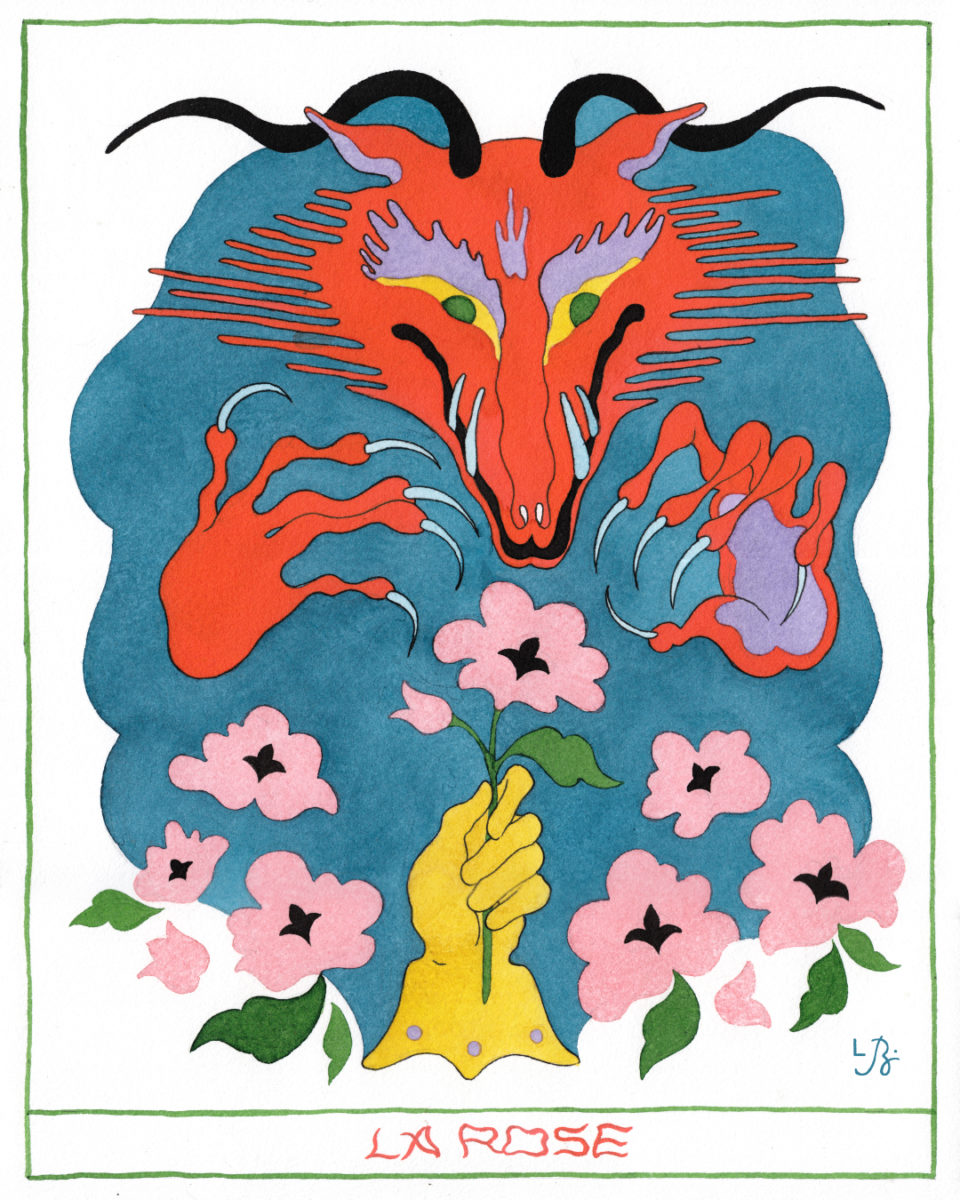
Lou Benesch is a French-American illustrator, based in Paris. Check out her instagram and her online shop!
